20 Sights and Landmarks in Salzburg: History & Architecture
WanderInEurope is reader-supported. Affiliate links and ads help us keep creating useful content for you.
Whenever I’m planning a trip to a new city, I always prioritize traditional architectural landmarks and historical sites on my itinerary. As a wanderer, they’re my absolute favorite! And I can’t emphasize enough how fascinated I am by their intriguing stories and profound beauty. If you can relate, and you’re visiting Salzburg—whether it’s a one-day visit, two-day stay, or three-day getaway—get ready for excitement!
Salzburg boasts plenty of cultural sites that will keep you wondering and wandering endlessly. From a time-transporting hilltop fortress to awe-inspiring churches and an imposing tunnel arch, I’ve discovered so many gems, and I’m excited to reveal them in this post. In fact, some of them are an absolute feast for the eyes! So, have your cameras at the ready—they’ll inspire you to press that shutter button repeatedly.
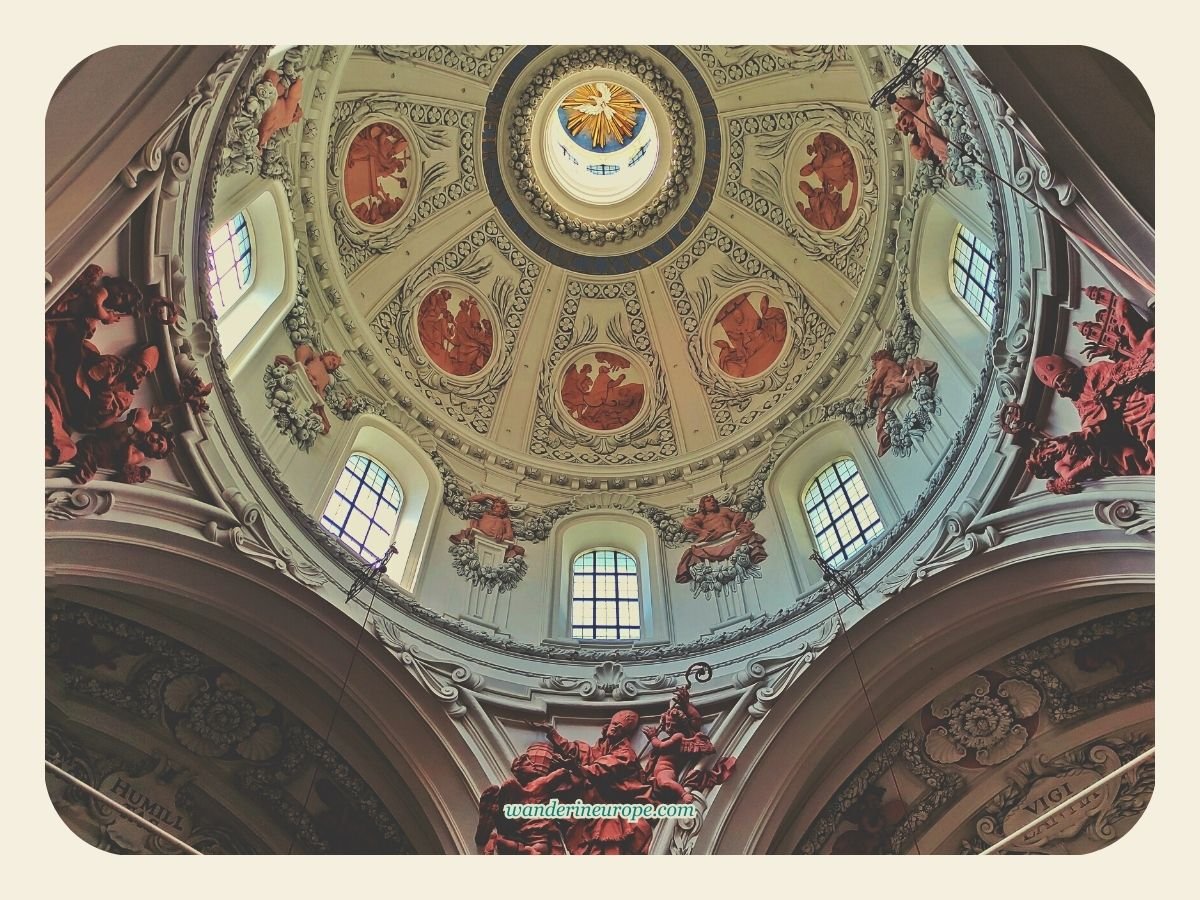
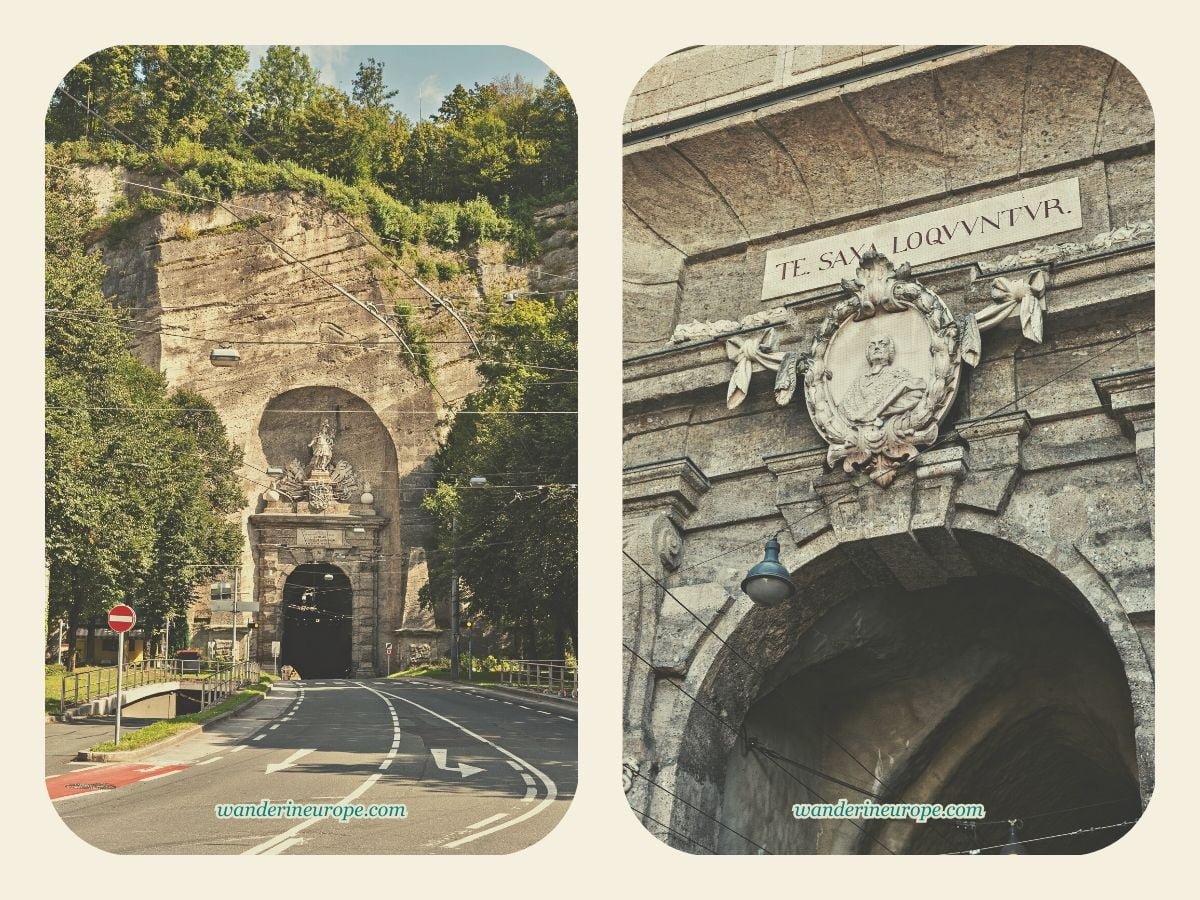
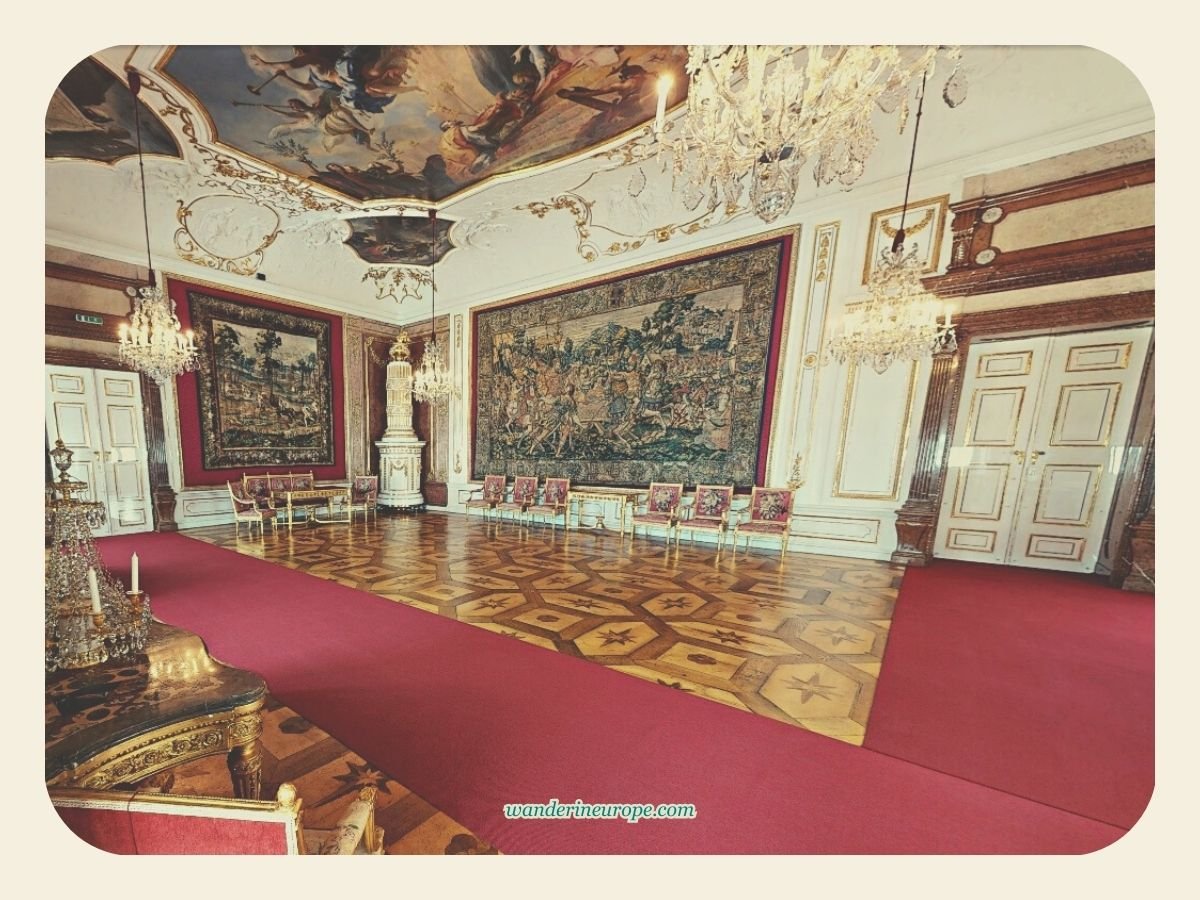
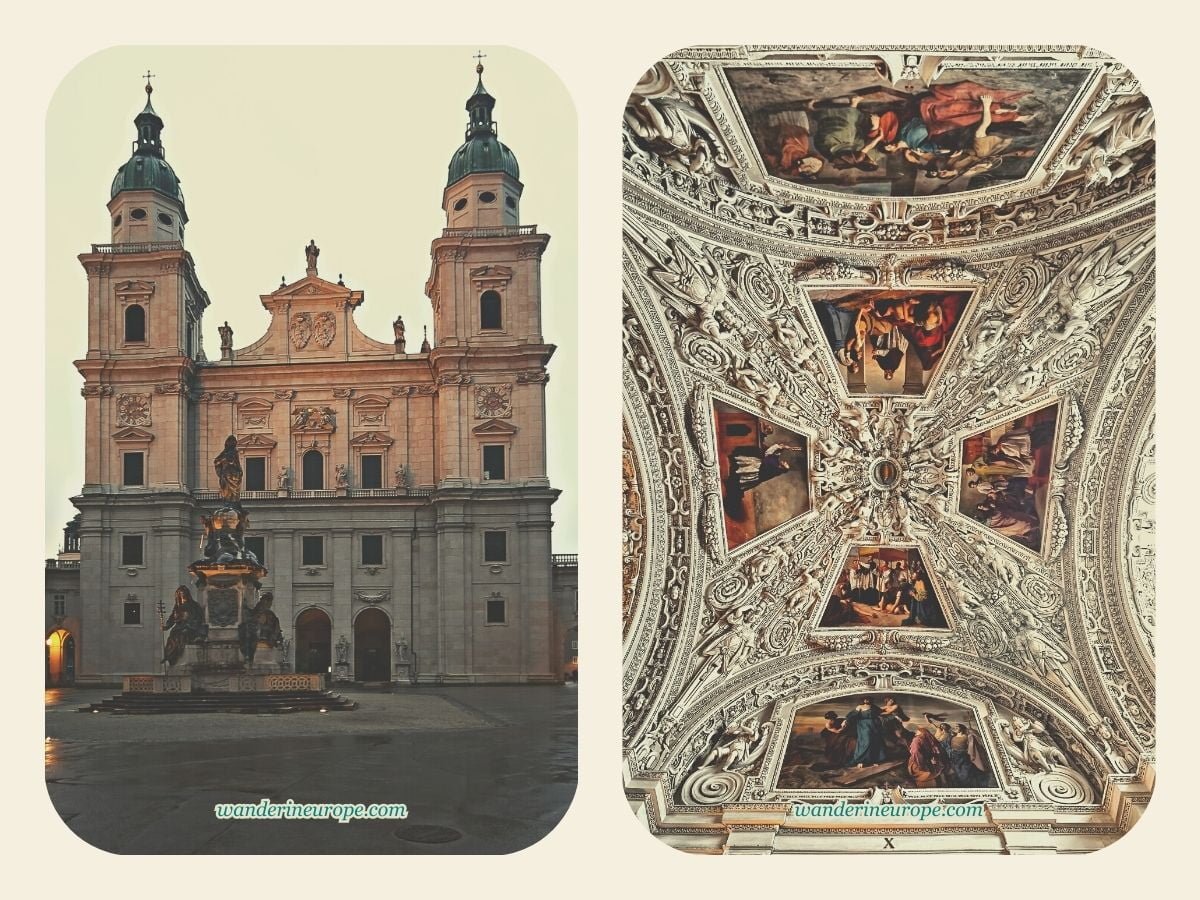
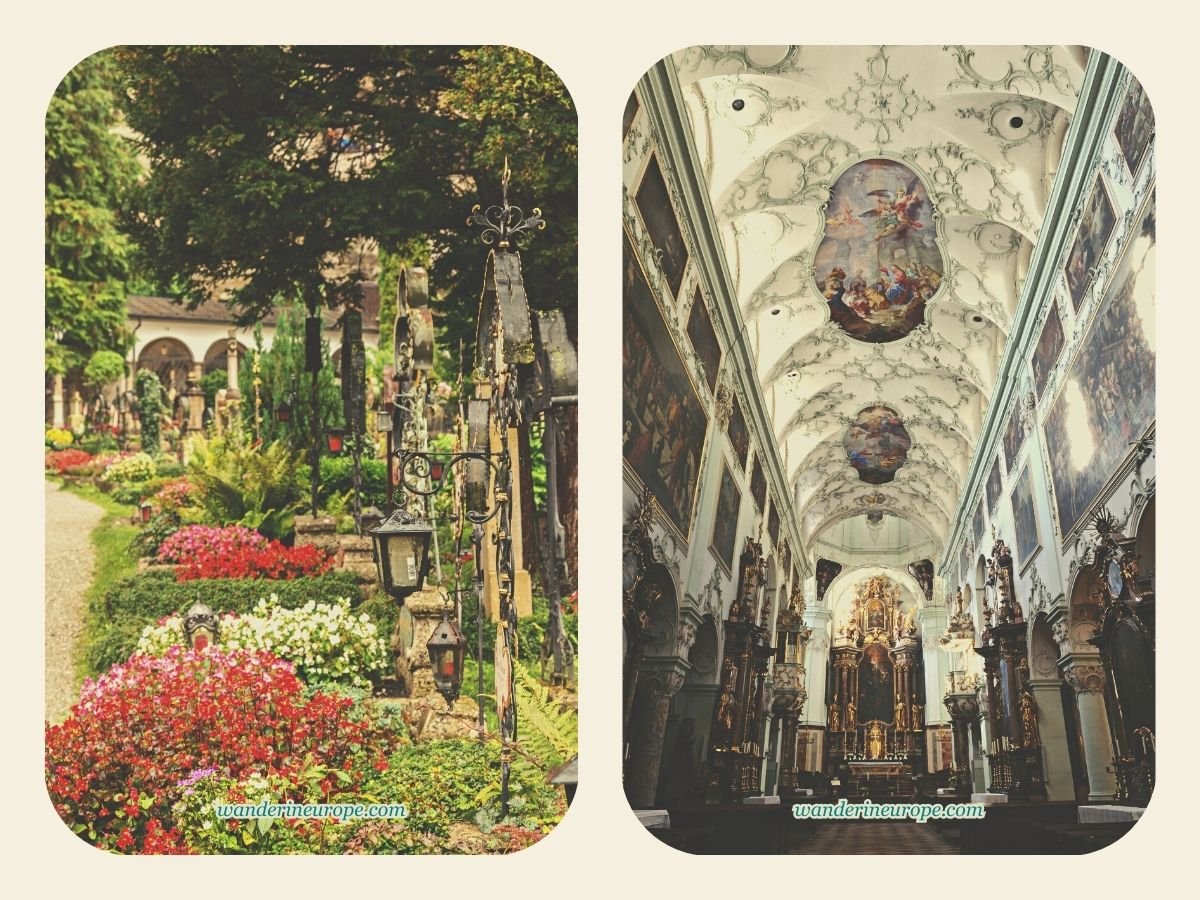
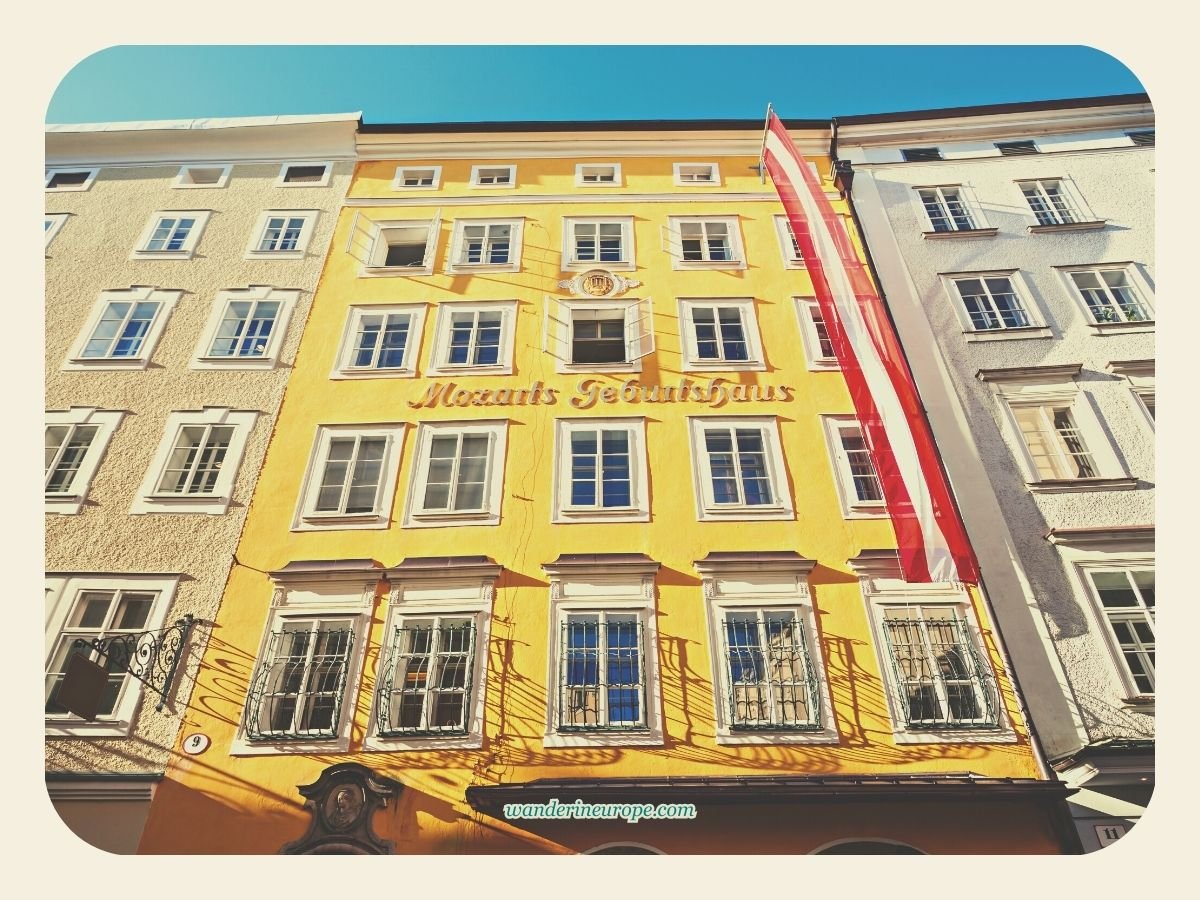
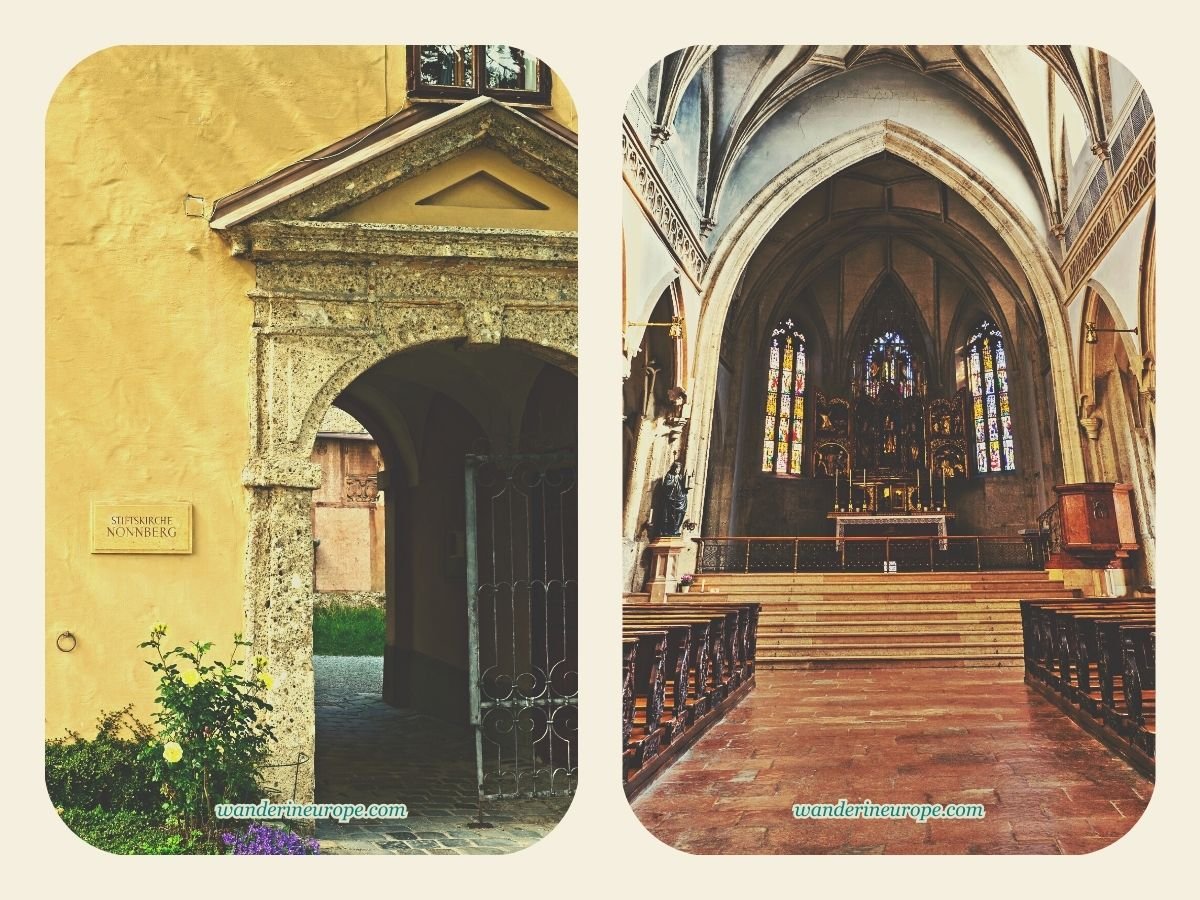
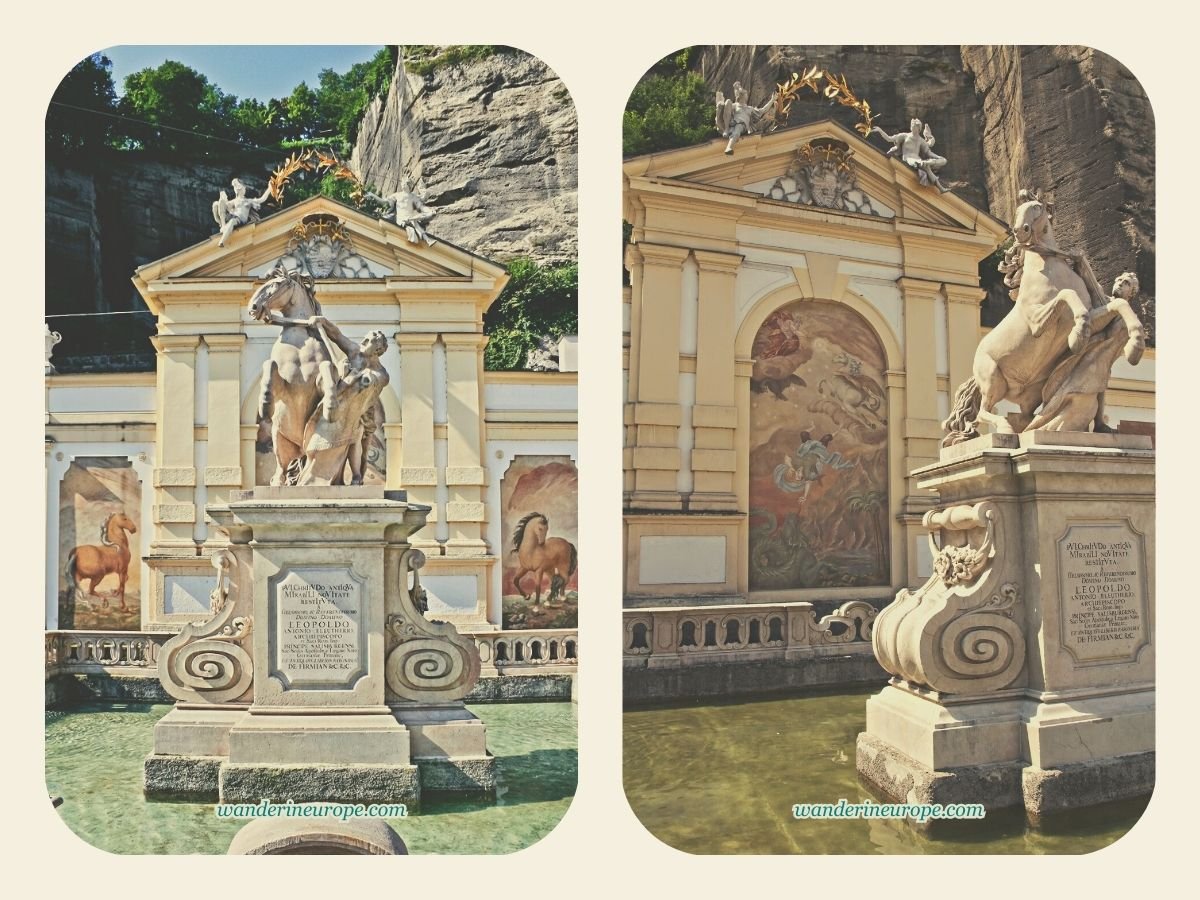
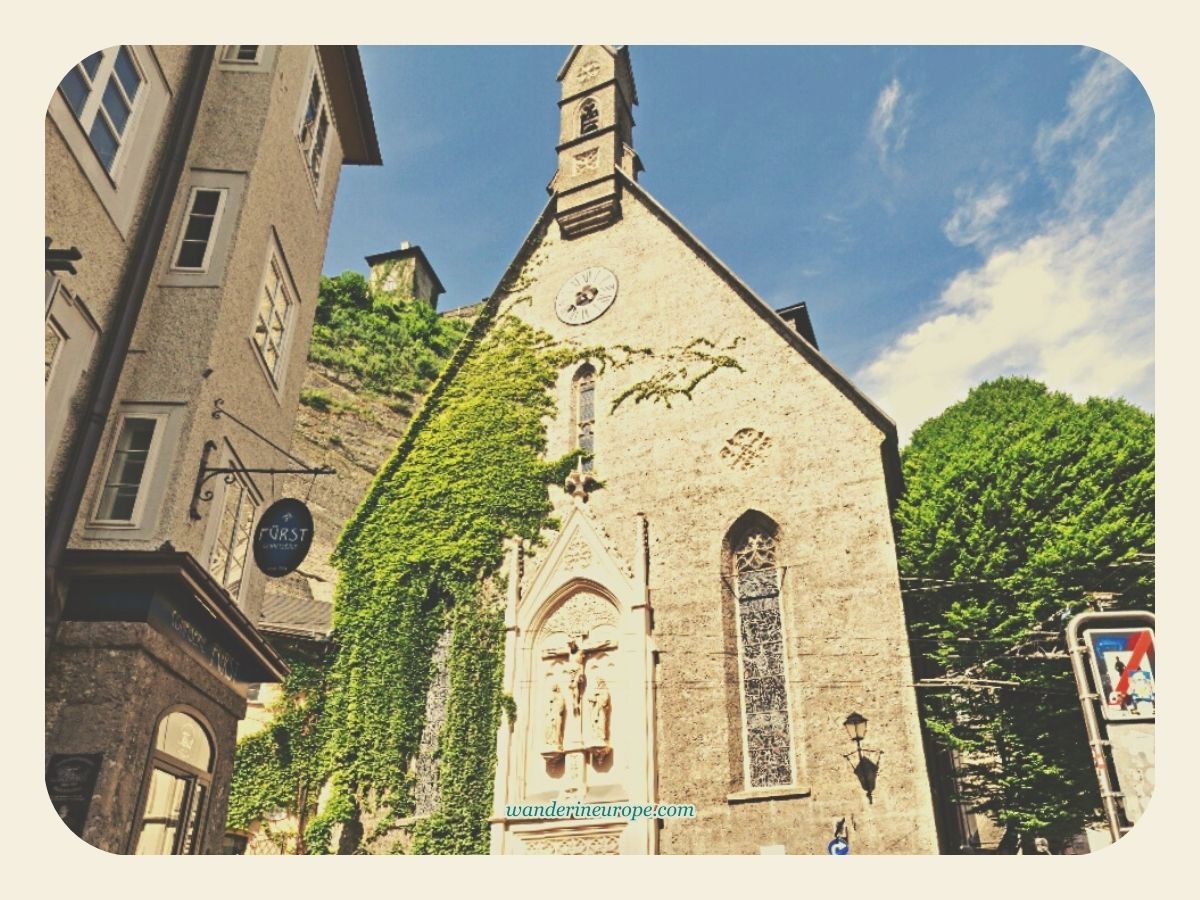
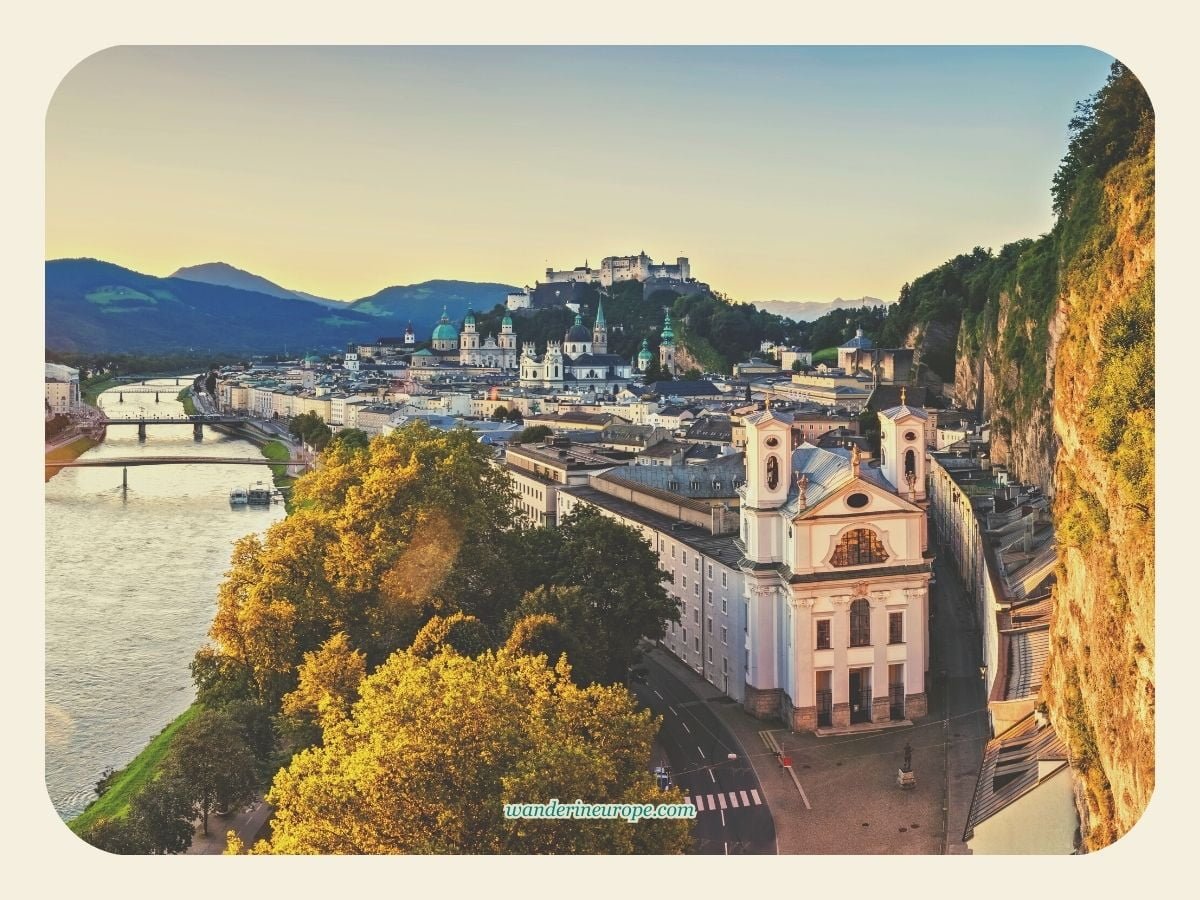
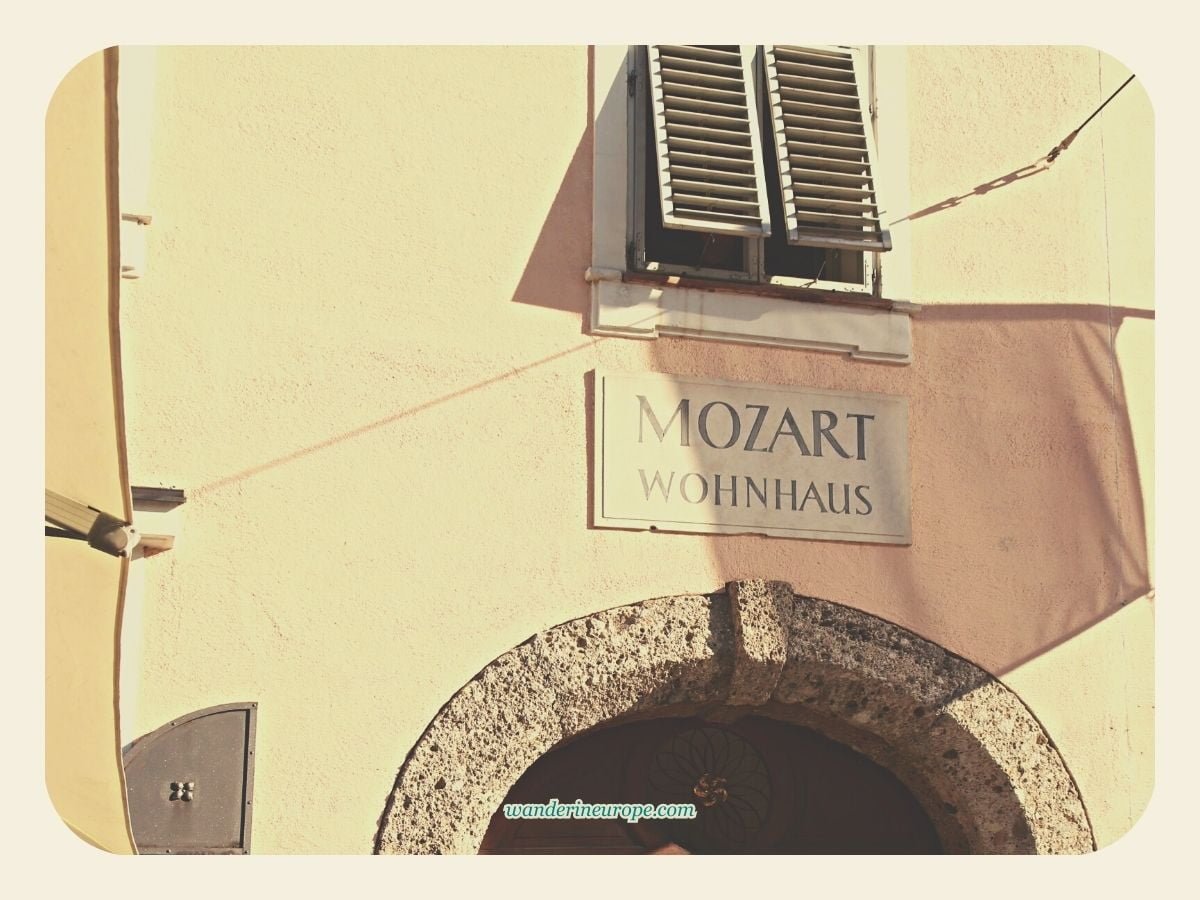
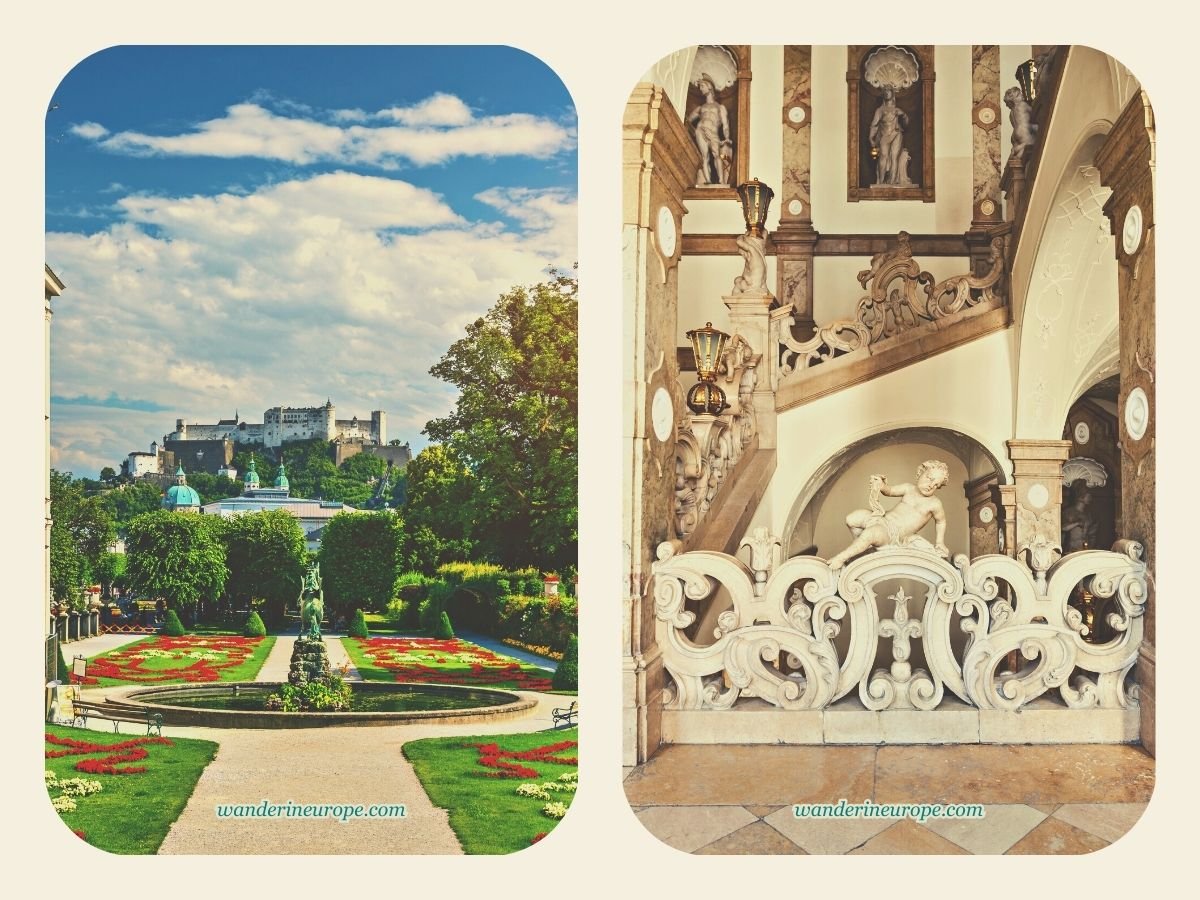
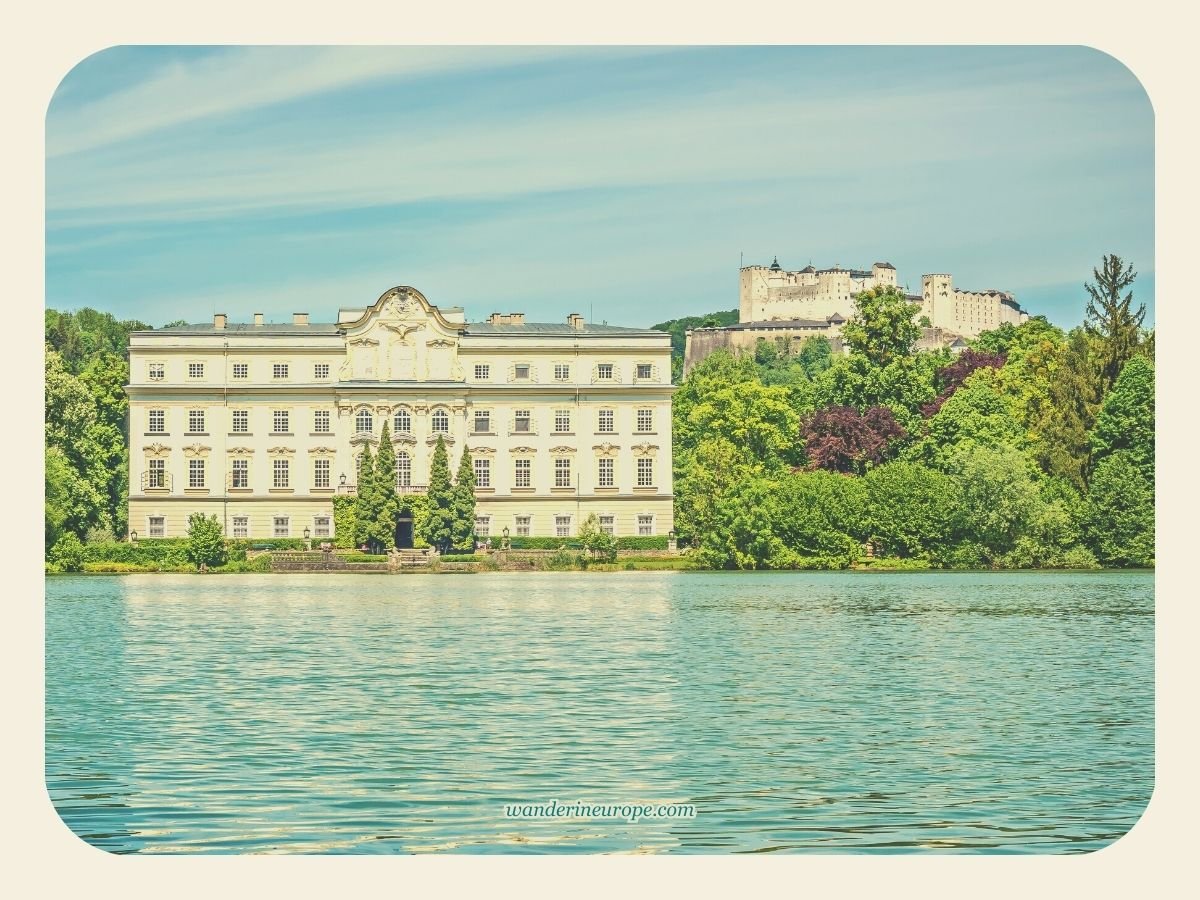
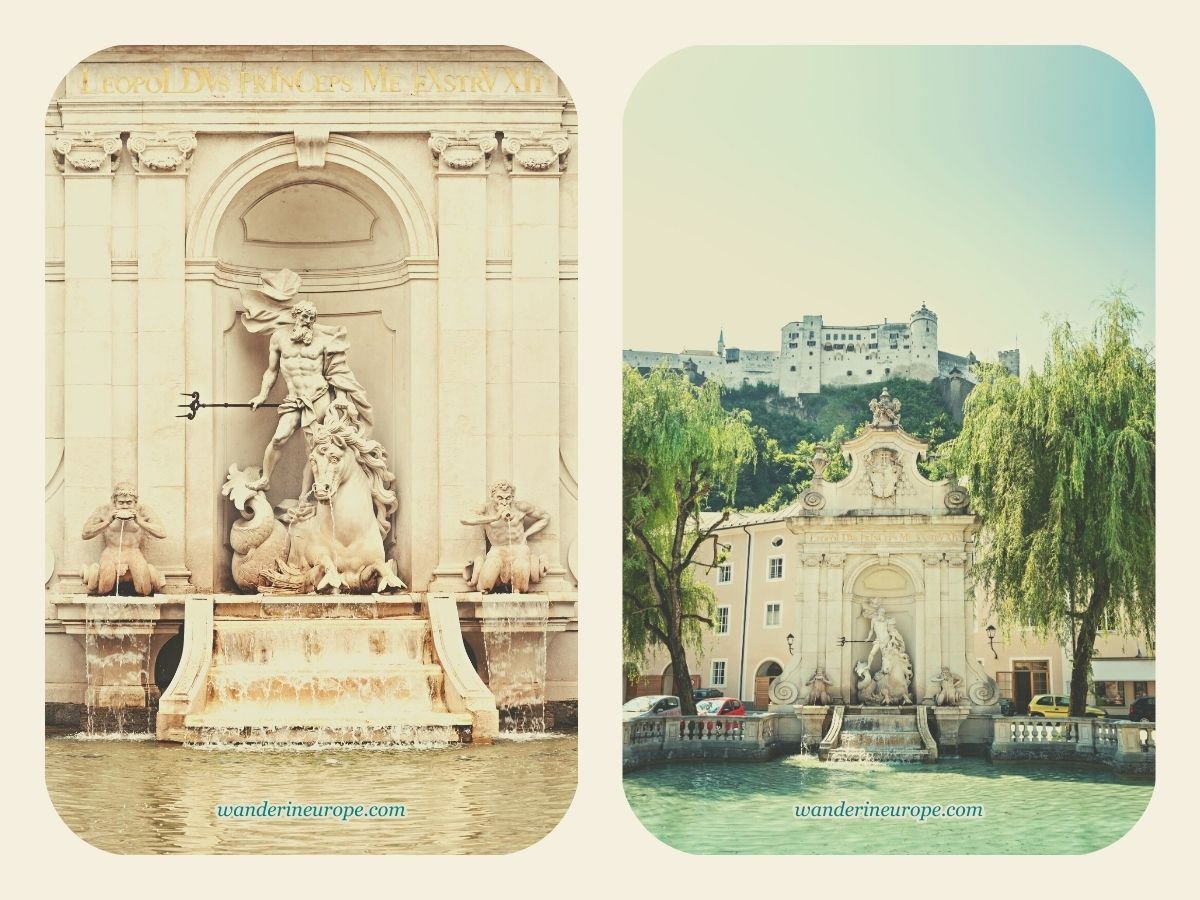
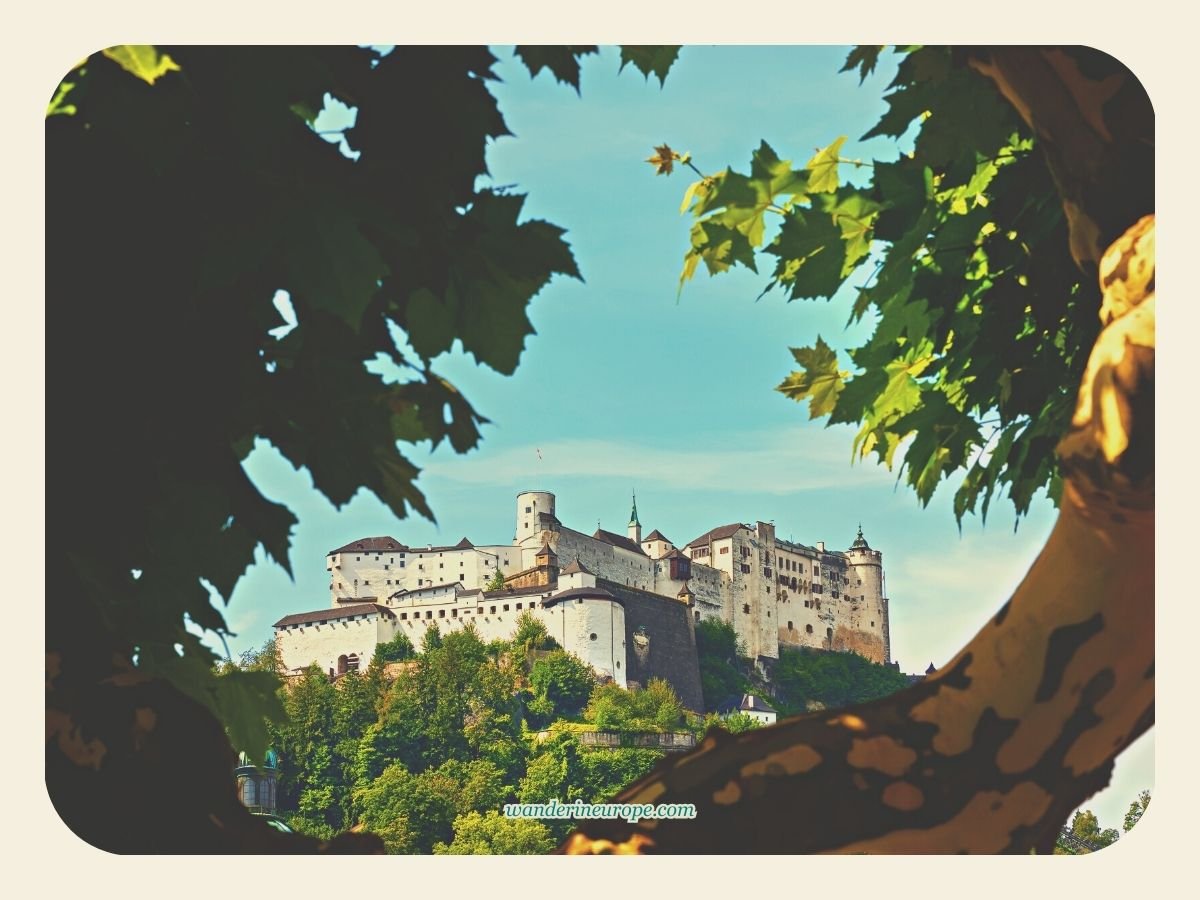
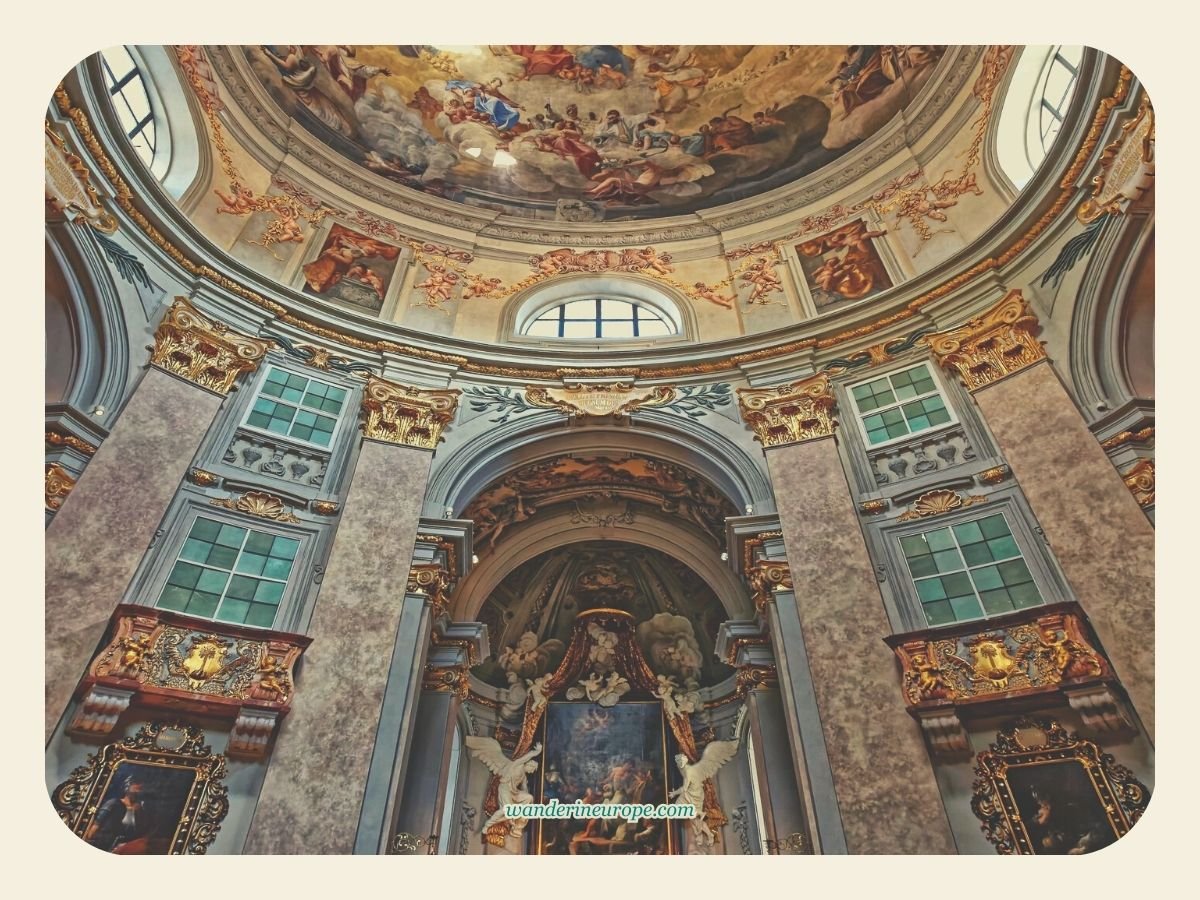
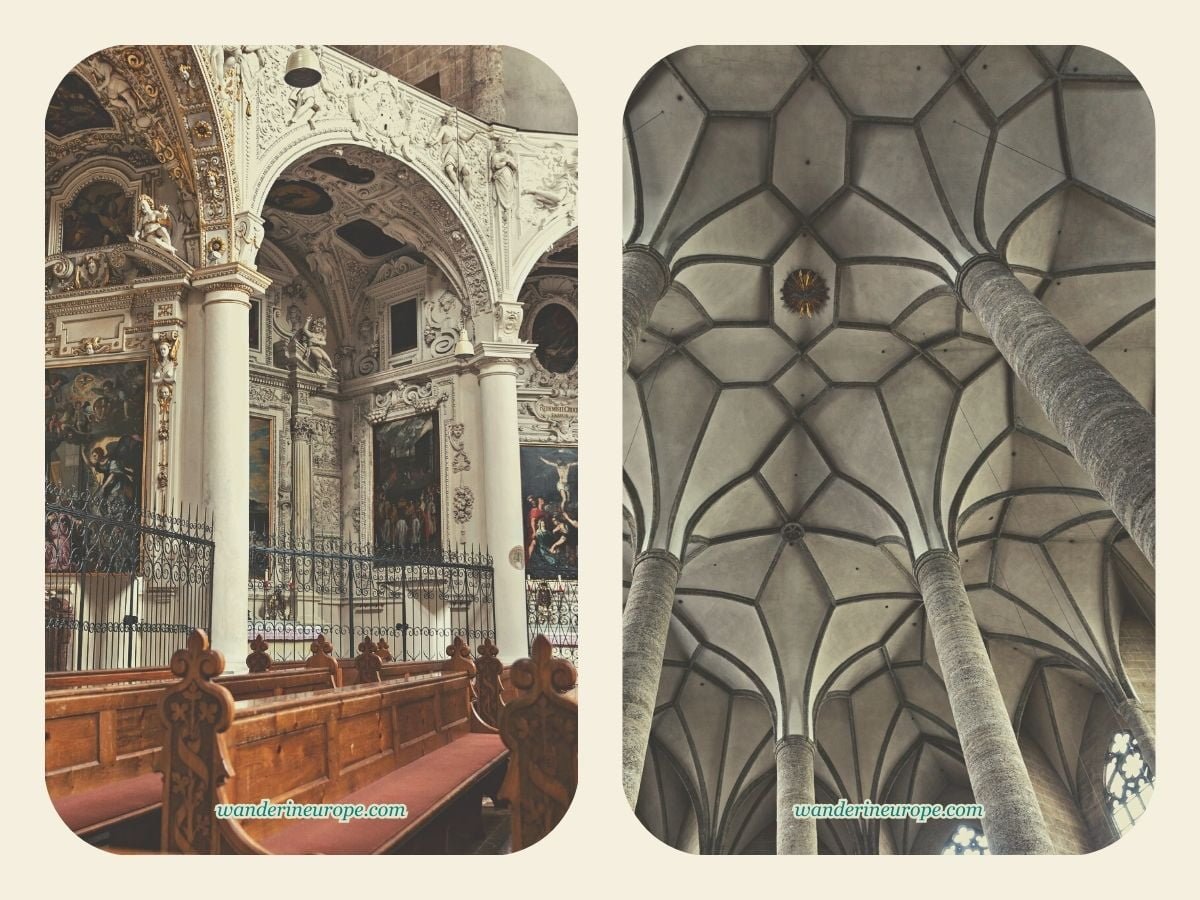
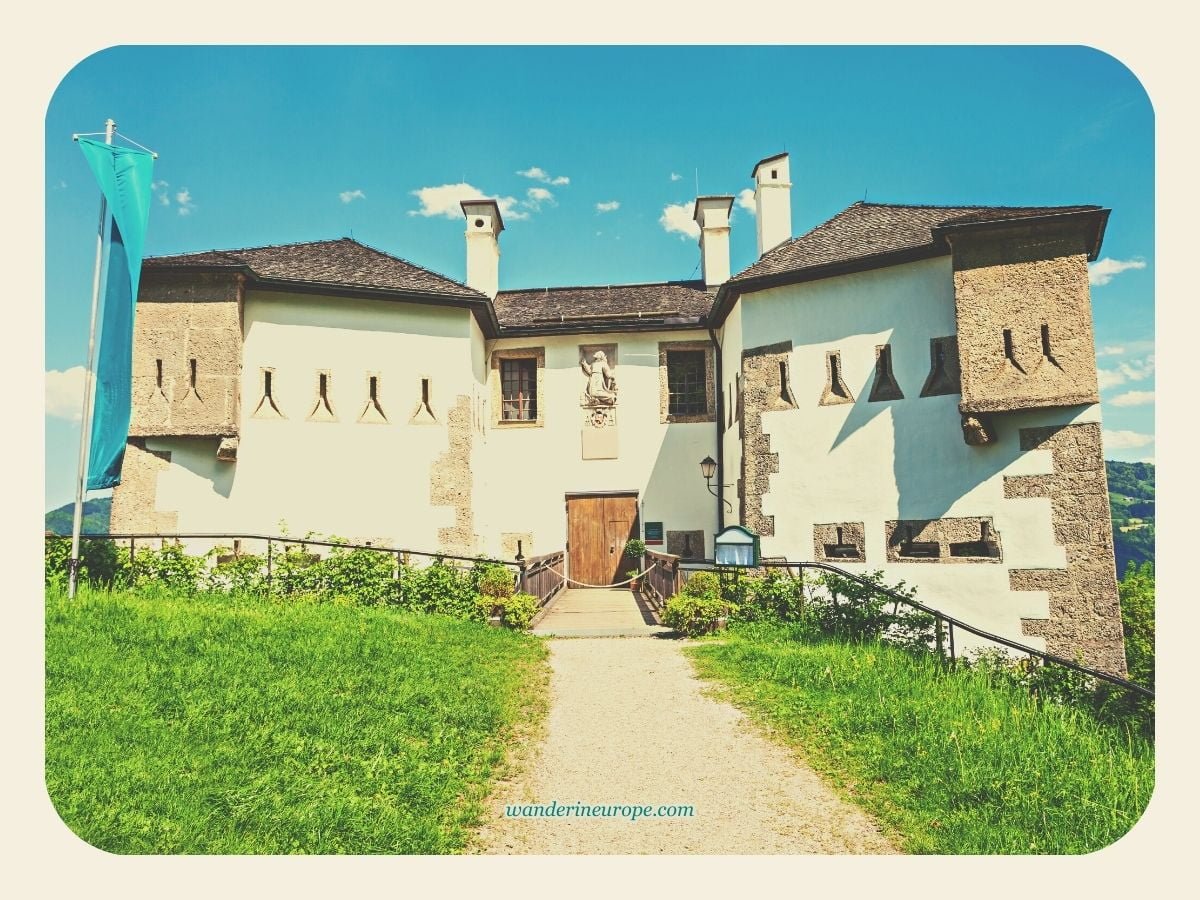
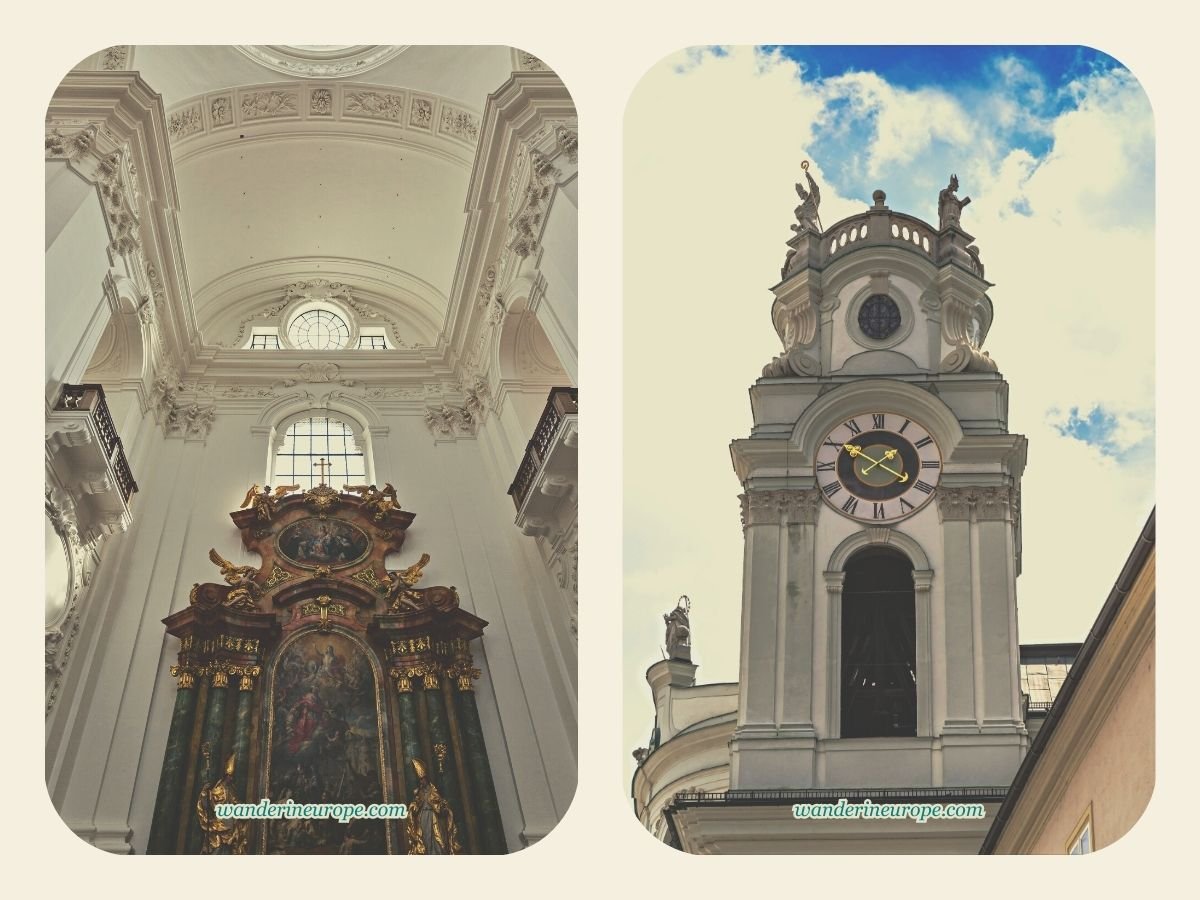
Conveniently, most of these notable landmarks in Salzburg are not only within walking distance from each other but also close to the picturesque viewpoints of the Old Town. So, if you’re planning a self-guided walking tour of Old Town Salzburg, you can create an amazing blend of experiences: architecture, history, and breathtaking views. For example, a short stroll from Mirabell Palace takes you to Kapuzinerberg or Mönchsberg.
There, you’ll find scenic spots with views of Hohensalzburg Fortress and the Baroque spires and domes of the city’s religious and secular buildings, all majestically dominating the skyline.


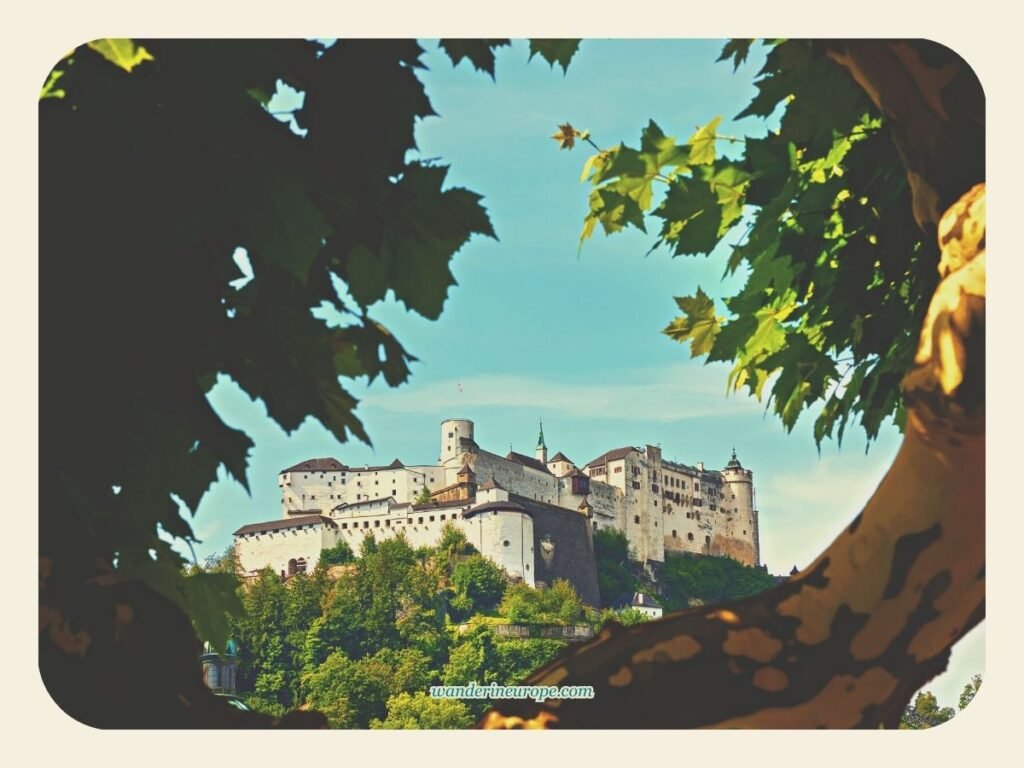

Hohensalzburg Fortress is the most important sight in Salzburg. It is one of the biggest medieval castles in Europe and was a safe place for the prince-archbishops of Salzburg during hard times.
Today, this fortress from the 11th century is a treasure for visitors. It has museums, beautiful rooms, and concerts about Mozart.
You can easily find Hohensalzburg Fortress because it sits on top of Festungsberg and can be seen from almost everywhere in the Old Town. It is also easy to get there by using a funicular.

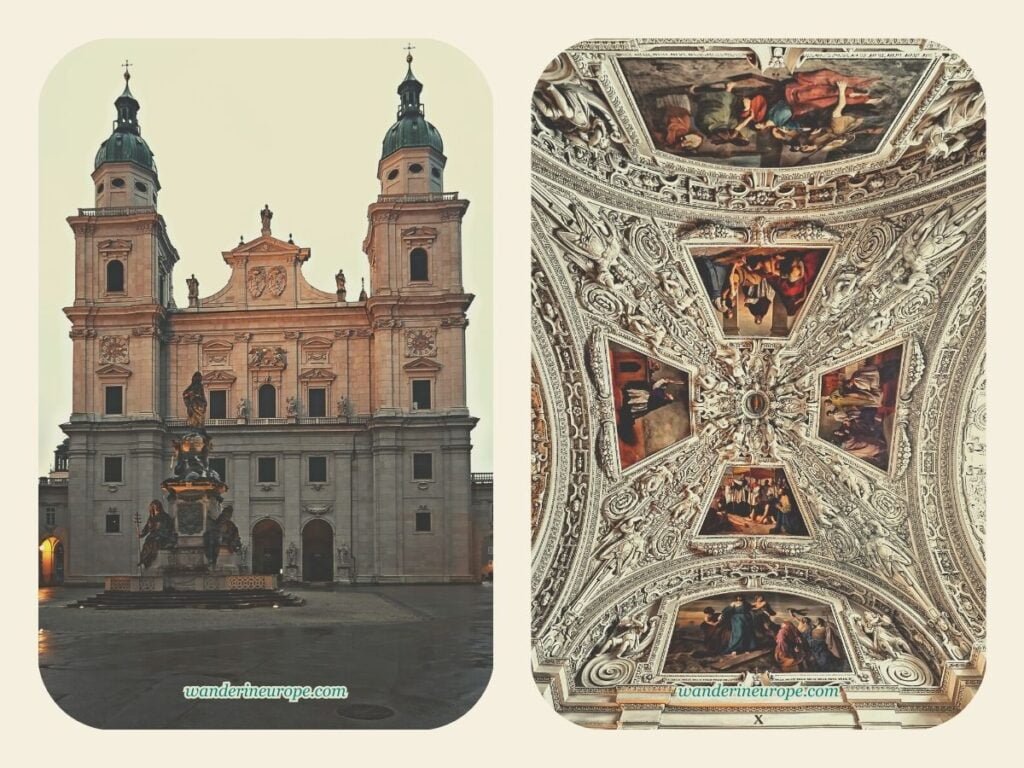

Salzburg Cathedral is a landmark that dominates the skyline of Old Town Salzburg. Its gigantic dome and tall twin spires make it easy to spot from different parts of the city.
For me, and for many others, Salzburg Cathedral is one of the architectural highlights of the city. The heavily embellished Baroque ceiling, with its unique stuccoes outlined in gray for extra visual dimension, is simply overwhelming.
But Salzburg Cathedral is more than just a beautiful sight. As the spiritual center of Salzburg, it’s full of religious symbolism that you might want to see, especially if you’re Catholic.

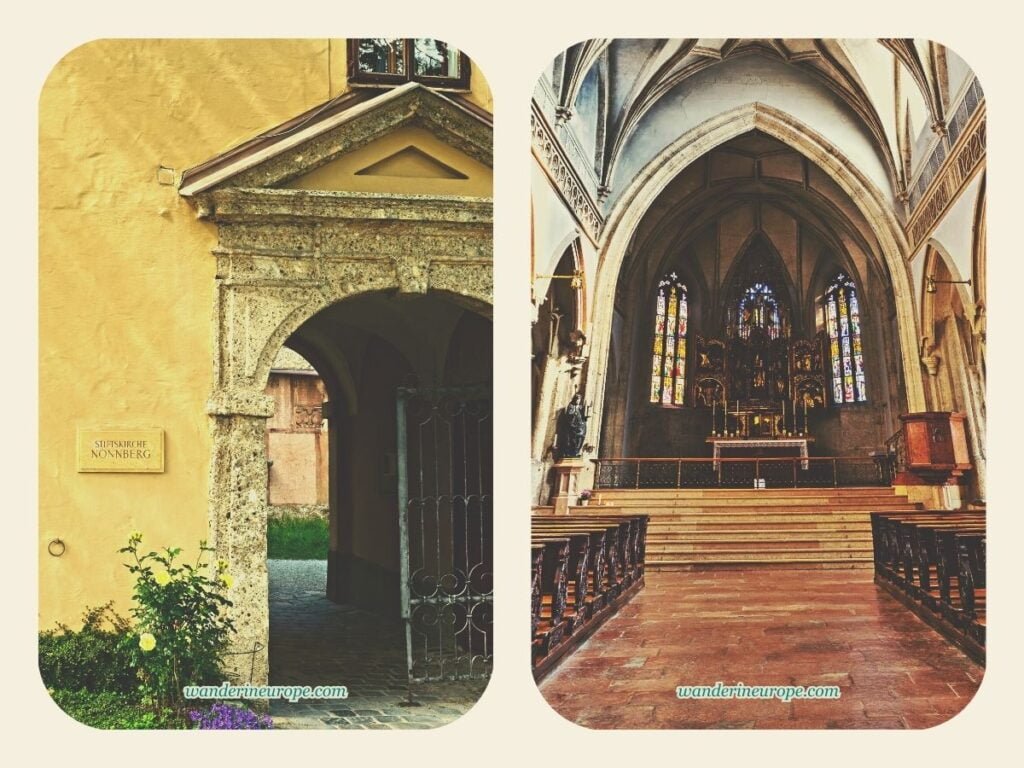

Like Salzburg Cathedral, Nonnberg Abbey is also a noteworthy religious site in Salzburg.
Founded in the 8th century by Saint Rupert, one of Salzburg’s patron saints, it’s considered the oldest continuously existing nunnery not only in Salzburg but also in the entire German-speaking world.
While its architecture may not be as breathtaking as Salzburg Cathedral, Nonnberg Abbey offers a unique and hair-raising experience: the sound of nuns singing in chorus. This only happens once or twice a day, so if you want to be sure to catch it, it’s best to arrive at the church inside Nonnberg Abbey before 6:45 am.
Nonnberg Abbey is located right next to Hohensalzburg Fortress on Festungsberg. If you’re visiting the area during midday, consider taking a quick detour to the abbey for a moment of peace and quiet in the city.

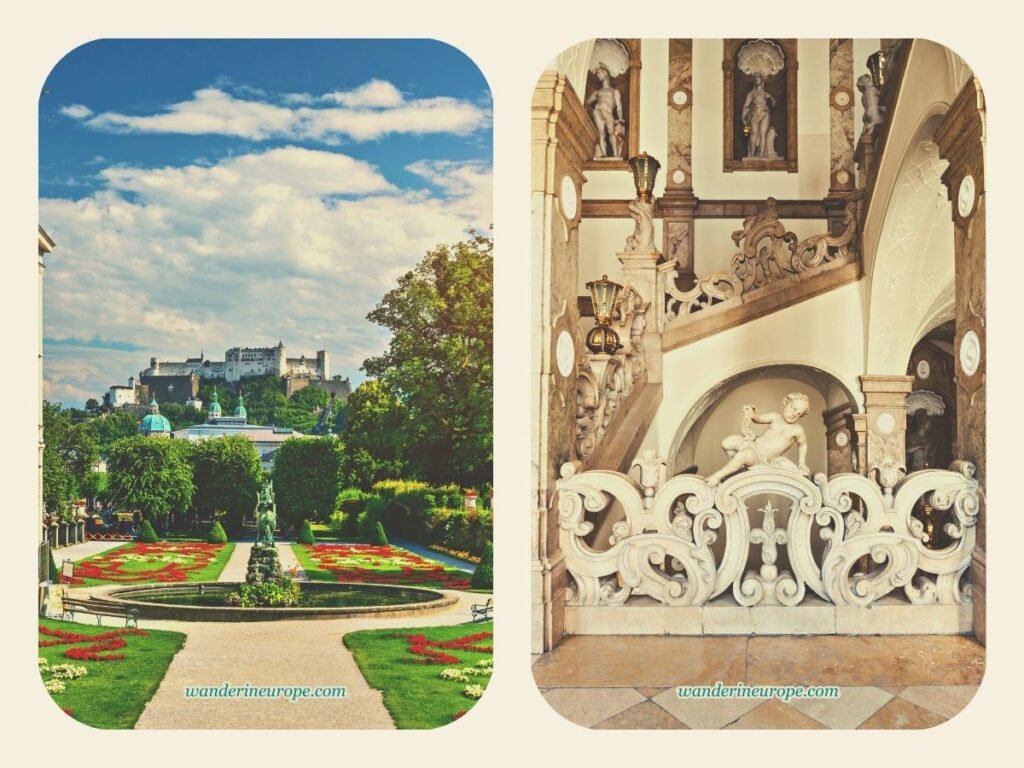

When it comes to movie-worthy beauty, Mirabell Palace is a must-see.
This early 17th-century palace, remodeled a century later, was actually featured in The Sound of Music! Fans of the movie will feel nostalgic as they wander through its gates, small parterre, gnome garden, and more.
The best part? You can visit the palace and its lovely gardens for free, including the Marble Hall, another architectural highlight in Salzburg. The hall is richly decorated with elegant stucco work and is one of the most sought-after wedding venues in Austria.
To make your visit to Mirabell Palace even more special, consider attending one of the Mozart Concerts held in the hall.

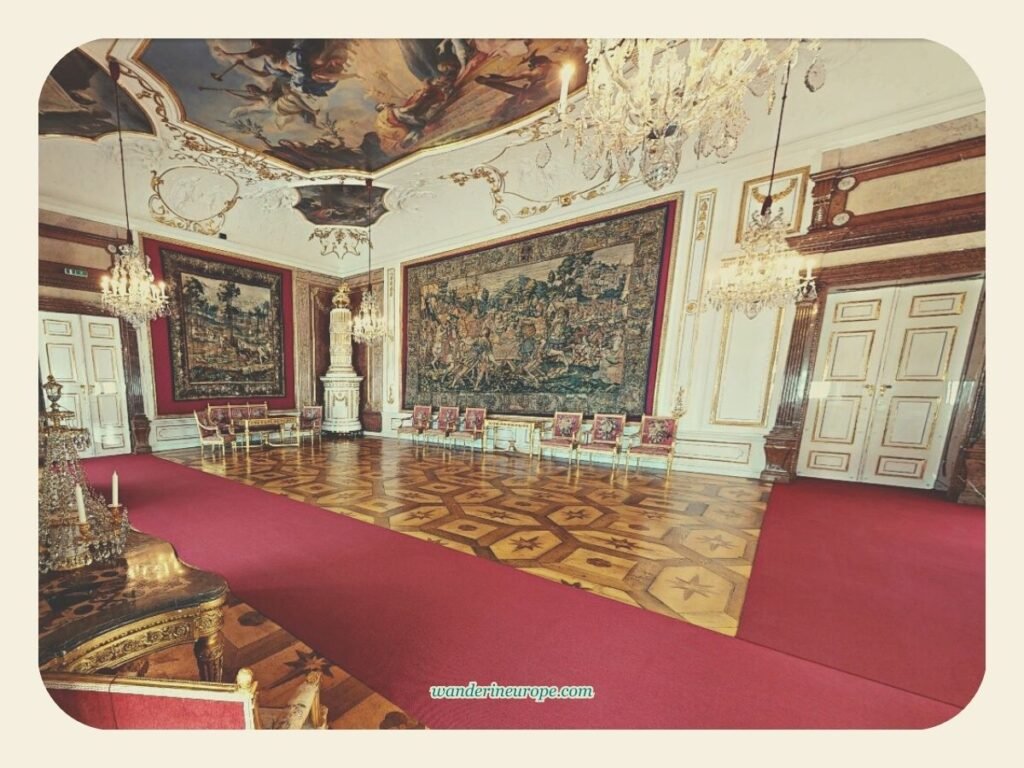

If you want to experience the grandeur of Salzburg’s past, the Salzburg Residenz is the perfect place to start.
Located in the heart of the city’s historic center, this palace was once home to the Prince-Archbishops of Salzburg, who used it to display their political power.
Today, the Salzburg Residenz is open to the public and houses an impressive art gallery called the Residenzgalerie. As you explore its halls, you’ll be transported back in time and feel the opulence and power that once filled its walls.
And while you’re there, don’t miss Wallistrakt, a must-see wing of the Salzburg Residenz. This part of the complex is made up of various architectural elements built during different construction phases.
If you want to experience the grandeur of Salzburg’s past, the Salzburg Residenz is the perfect place to start.
Located in the heart of the city’s historic center, this palace was once home to the Prince-Archbishops of Salzburg, who used it to display their political power.
Today, the Salzburg Residenz is open to the public and houses an impressive art gallery called the Residenzgalerie. As you explore its halls, you’ll be transported back in time and feel the opulence and power that once filled its walls.
And while you’re there, don’t miss Wallistrakt, a must-see wing of the Salzburg Residenz. This part of the complex is made up of various architectural elements built during different construction phases.
Here’s where you can learn more about the tour to DomQuartier.

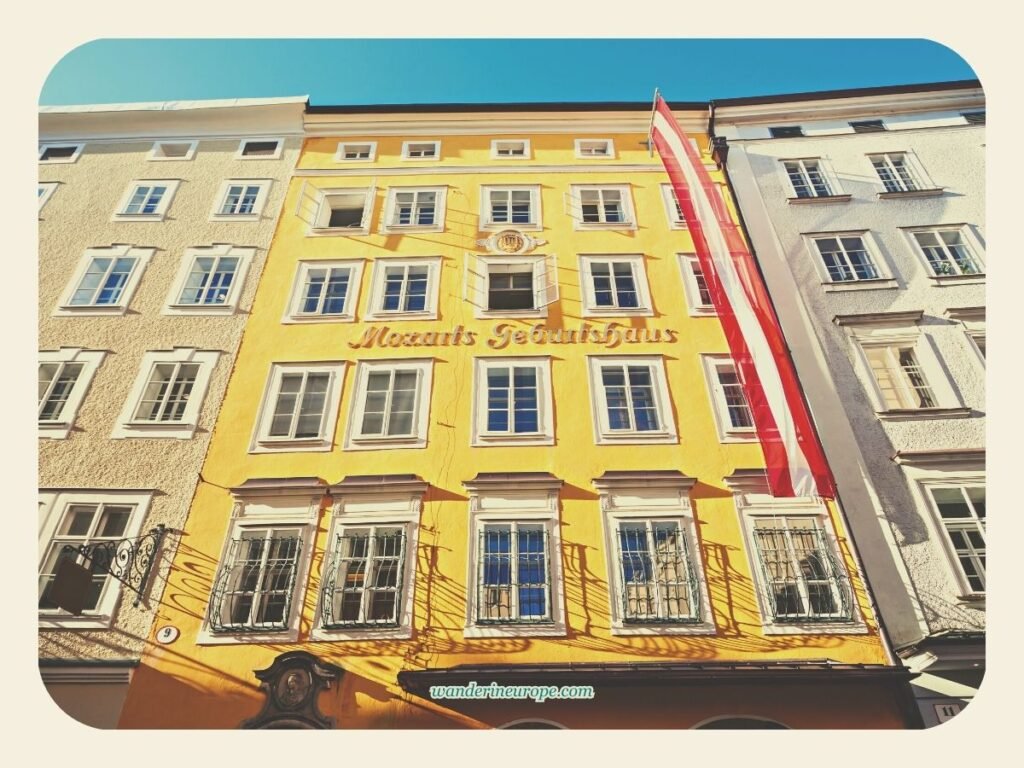

Are you a fan of classical music or just looking for some inspiration?
If so, don’t forget to visit Mozart’s birthplace in Old Town Salzburg. Located at No. 9 Getreidegasse, this historic building is where the legendary composer Wolfgang Amadeus Mozart was born and spent his early years.
Today, it houses a museum that tells the story of Mozart’s early life, his first musical instruments, and his passion for opera. As you explore the museum, you’ll see exhibits like Mozart’s childhood violin, portraits, documents, and early editions of his music.
The second floor is dedicated to Mozart’s love of opera and even includes the clavichord on which he composed The Magic Flute. For anyone with big dreams and a desire to achieve them, a visit to Mozart’s birthplace is sure to inspire.
Check out all the interesting things you can discover inside Mozart’s Birthplace.

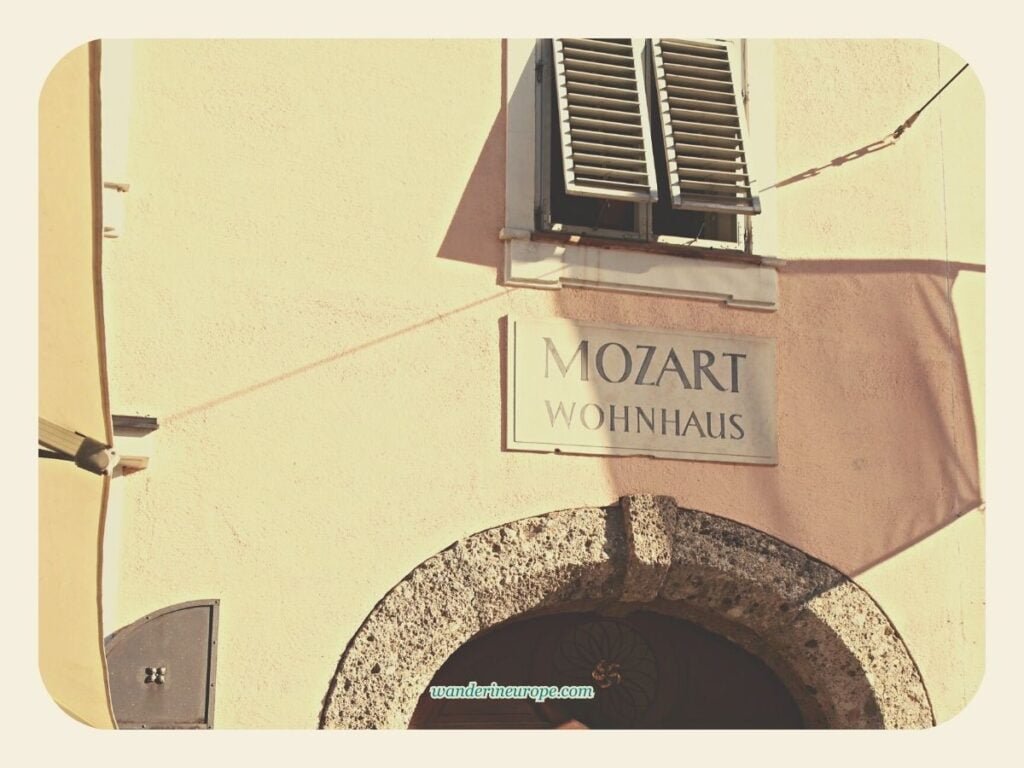

If you’re a fan of Mozart, be sure to include a visit to Mozart’s Residence in Makartplatz on your itinerary. This eight-room apartment, where Wolfgang Amadeus Mozart once lived, is now home to a museum that offers a wealth of information about the composer’s life and work.
A quick background: The Mozarts moved into this apartment in 1773, shortly after their third journey to Vienna. The house on the Getreidegasse where Mozart was born had simply become too small for the family or to host social gatherings appropriately.
In the museum, you can see many original documents and portraits, as well as Mozart’s pianoforte. The exhibition provides an array of interesting facts about the history of the house, Mozart’s Salzburg years, and the life of the Mozart family.
A multi-vision show, rotating exhibitions, concerts, and talks offer a very rich and diverse Mozart experience.
For more information, please refer to the official website linked at the resources section of this post.

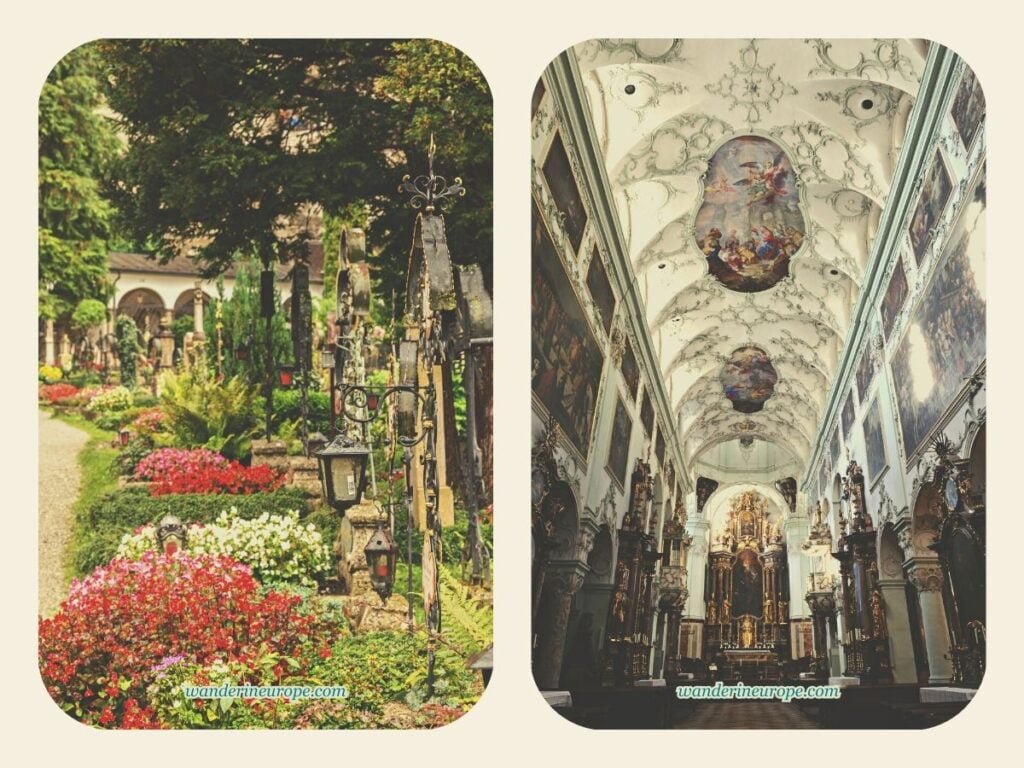

For history buffs or lovers of beautiful architecture, Saint Peter’s Church is another landmark in Salzburg to add to your itinerary.
Also known as Saint Peter’s Abbey or Saint Peter’s Archabbey, this Benedictine monastery and former cathedral is considered one of the oldest monasteries in the German-speaking area, with a continuous history since its foundation in 696.
Unlike the Salzburg Cathedral, Saint Peter’s Church has a unique mix of architectural styles, including Romanesque, Gothic, Renaissance, Baroque, and Rococo. The walls of the nave are adorned with stunning paintings, and the organ and various side chapels are also worth seeing.
Some of the most interesting parts of Saint Peter’s Abbey are its Long Gallery, which you can access through the DomQuartier, and the Catacombs, which you can visit separately.
Fun fact! Did you know that Saint Peter’s Church in Salzburg is home to the oldest library in Austria? It has a collection of 800 manuscripts, including the Verbrüderungsbuch, which is considered the most precious. This manuscript was deposited in 784 by Bishop Virgil.
For more on Saint Peter’s Abbey in Salzburg, see its official website in the resources section.

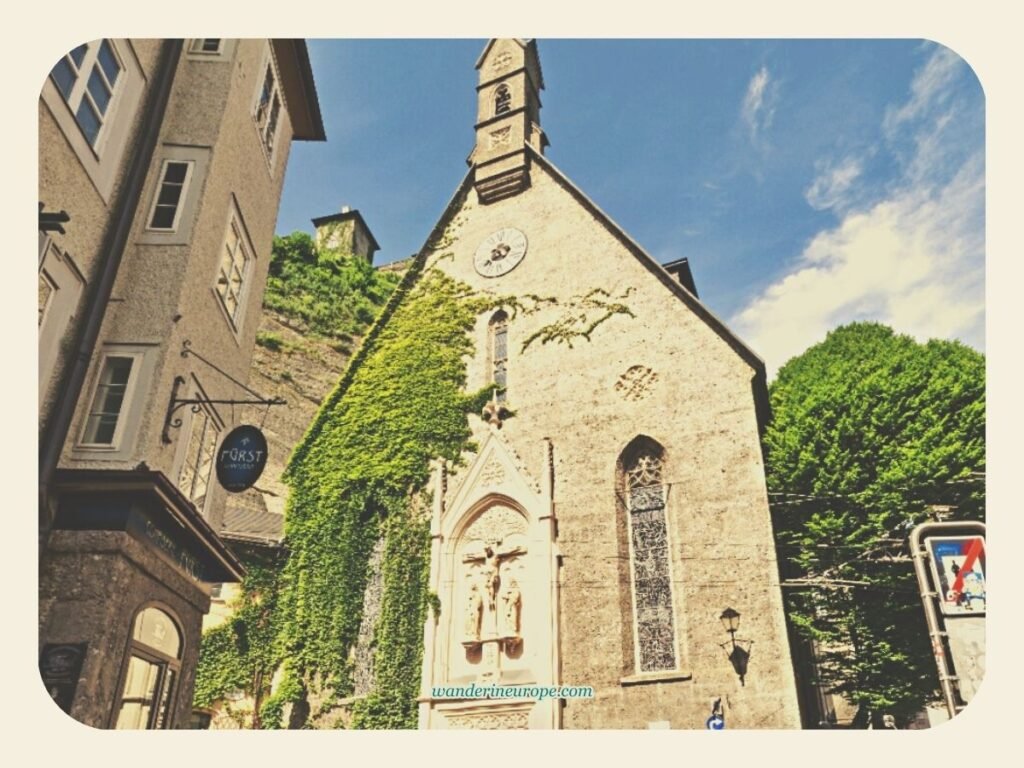

As you wander through the charming streets of Getreidegasse, you’ll come across a hidden gem nestled at the end of the street, directly on the cliff of the Mönchsberg.
This is St. Blaise’s Church, a heritage-protected building with roots dating back to the 12th century.
St. Blaise’s Church is unique in that it was the first hall church built in Salzburg, with its nave and aisles being of equal height. It’s also quite unique because of its Gothic interiors, separated by an ornate rococo lattice, and 18th-century high altar, built in an unusual classicist style.
But perhaps the real treasure of St. Blaise’s Church is its delicate late-Gothic sacrament shrine, which dates back to around 1460. This exquisite piece likely once served as a reliquary and is designed in the form of an elaborately crafted filigree church with a small oriel.
You can check the resources section of this post to find more information about Saint Blaise Church.

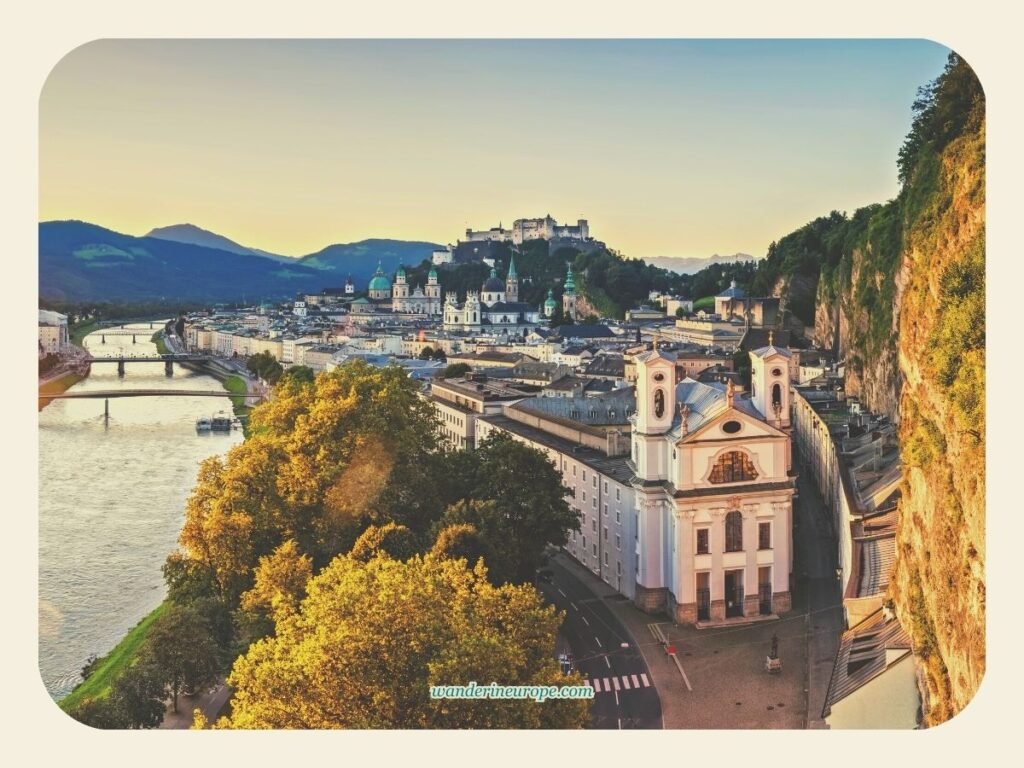

As you wander through the northern part of Old Town Salzburg, near Klausentor, you’ll come across another historical landmark in Salzburg — St. Mark’s Church.
This 17th-century church is easily identifiable by the roof of its front façade, adorned with Saints Markus, Ursula, and Augustinus.
If you’re visiting the Humboldt Terrace in Mönchsberg to see the Old Town from a unique perspective, this is the church that you’ll see below you. Upon entering the antechapel, you’ll be greeted by wooden statues of four saints from 1700.
This leads directly to the bright and welcoming central hall, where you’ll see the rich stucco-work and fresco paintings by Christof Anton Mayr from 1756. The altars were likely designed by Fischer von Erlach, with the main altar featuring a painting by Johann Martin Schaumberger.
One of St. Mark’s Church’s notable features is its organ, built by Matthäus Mauracher and his sons.
For more information about Saint Mark’s Church, please see the resources section at the end of this post.

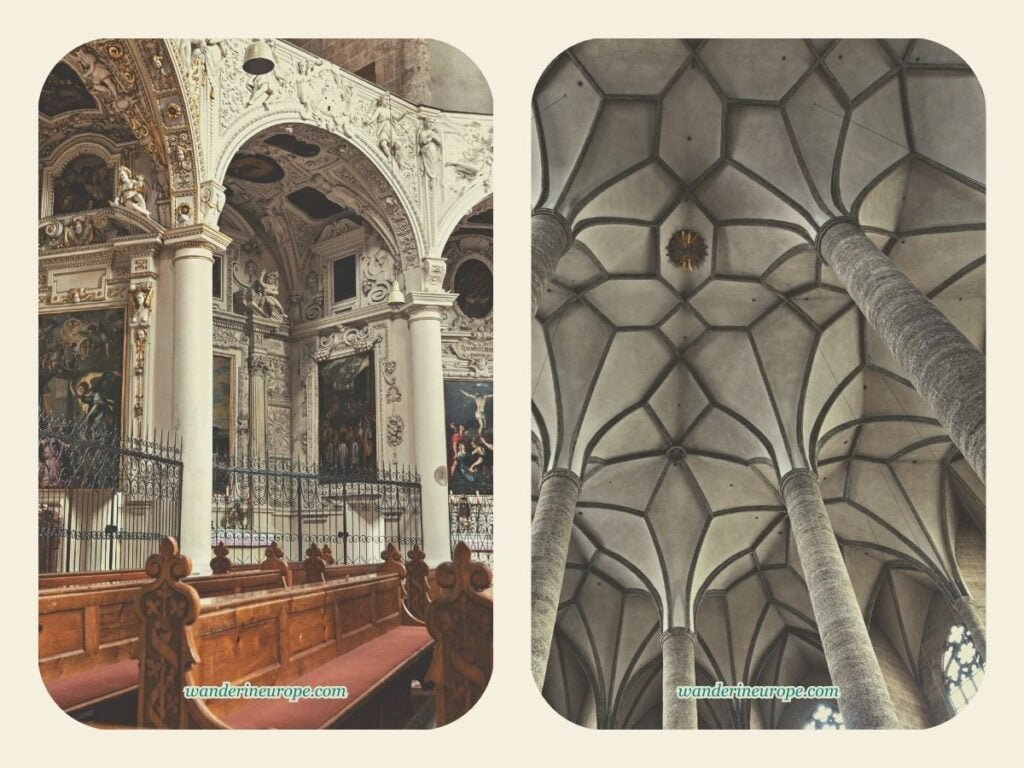

The Franciscan Church is a beautiful historical landmark in Salzburg that’s definitely worth seeing for its unique mix of Gothic and Baroque architecture.
Located at the intersection of Franziskanergasse and Sigmund-Haffner-Gasse, opposite the Franciscan Friary in Old Town Salzburg, this early 15th-century church is a sight to behold.
As soon as you enter the church, your eyes will be immediately drawn to the tall, well-lit Gothic choir, supported by slender purplish columns that reach up to an elaborate rib vault. The rib vault is particularly eye-catching, with its different geometric shapes and elegant lighting that will inspire you to take several photos to marvel at the interiors.
Within the choir lies another highlight – the high altar, an ornate creation of red marble and gold. The Madonna statue in the center is a Late Gothic sculpture by Michael Pacher of Tyrol.
For more information about the Franciscan Church, please see the resources section of this post.

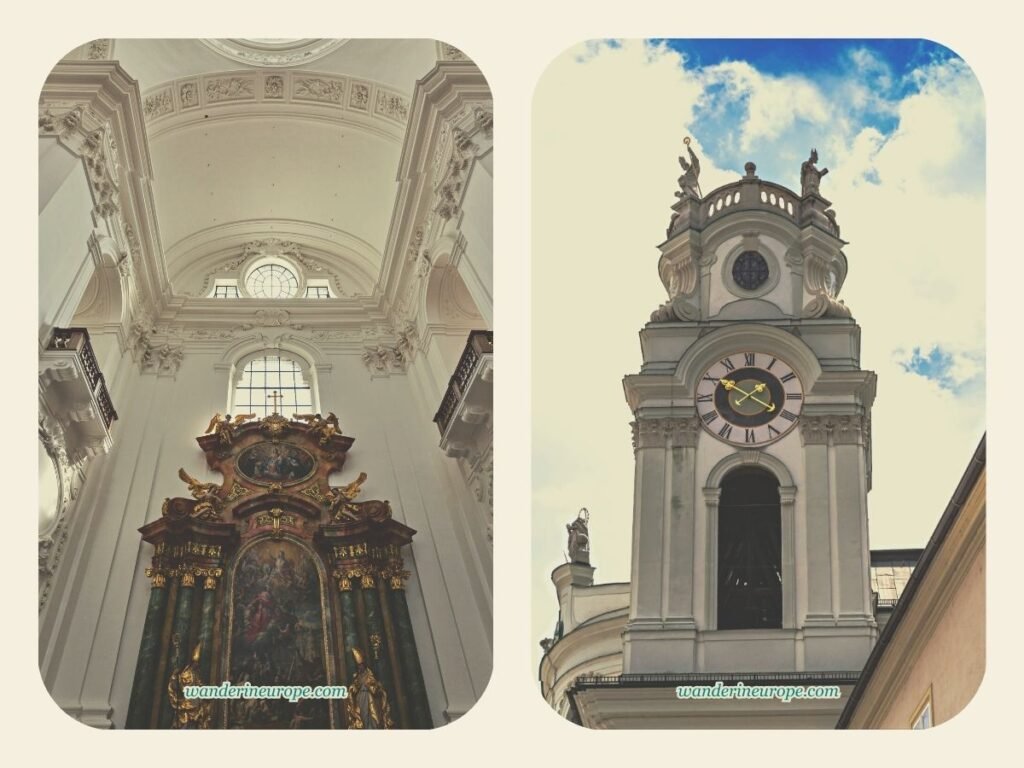

The Kollegienkirche (Collegiate Church) is another must-see landmark in Salzburg, renowned as one of the most important Baroque churches in Austria.
When you step inside, you’re more likely be impressed by the exceptionally steep dimensions of the church interior.
They were built in Baroque style by Johann Bernhard Fischer von Erlach, an Austrian architect, sculptor, engraver, and architectural historian whose Baroque architecture profoundly influenced and shaped the tastes of the Habsburg Empire.
He designed the church’s hall with white walls without paintings, which became a model for late-Baroque churches in southern Germany.
Aside from the architecture, the 19th-century organ of Kollegienkirche is also notable. It was played several times by Anton Bruckner, an Austrian composer and organist best known for his symphonies and sacred music, which includes Masses, Te Deum and motets.
If you’re interested in learning more about this beautiful church, you can join a tour inside.
More info? Its official website at the resources section has all the visiting information you need.

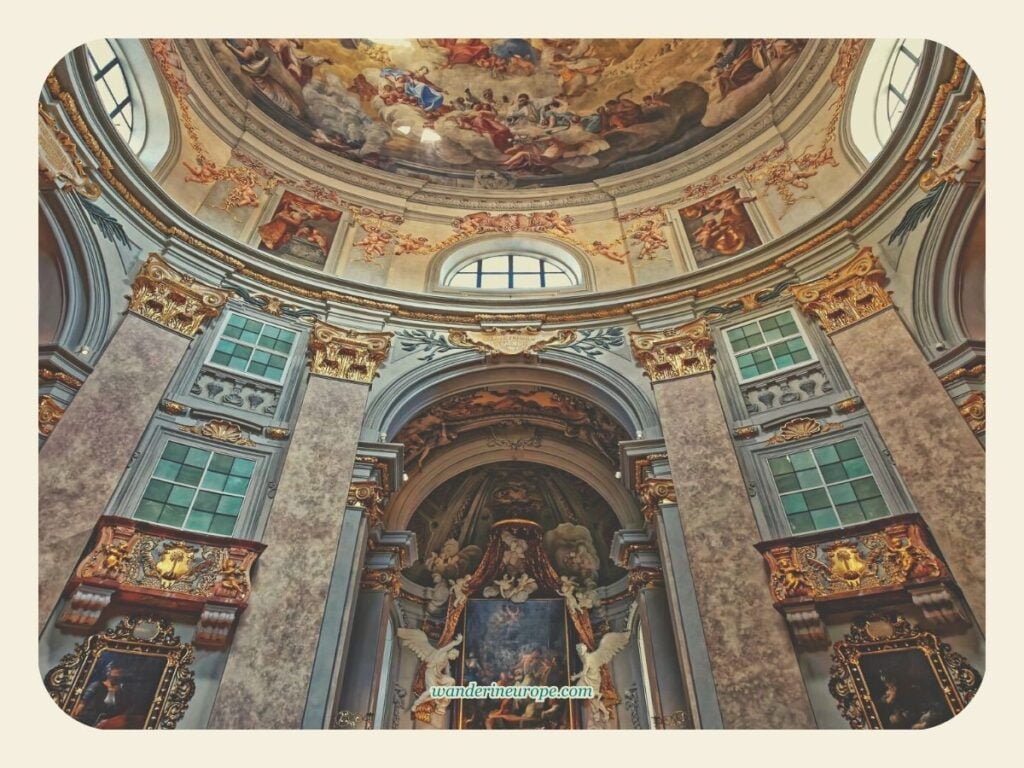

If you’re a traveler looking for hidden gems in Salzburg, the Kajetanerkirche or Cajetan Church is a great place to see. Located on Kajetanerplatz Square, opposite the federal province’s courthouse, this beautiful church resembles a palace.
With its broad, palatial façade and mighty oblique-oval dome, the Cajetan Church is a true architectural gem even at first sight. The beauty exists both outside and inside — the interior of the church is decorated with stucco work, giving it a festive, stately, and pure appearance.
When you step inside, you’ll surely notice the dome and its frescoes, depicting Saint Kajetan in heavenly glory with the Holy Trinity and Saint Mary. Abundant light pours into the dome, illuminating the space and highlighting its beauty.
The highlight of visiting the Kajetanerkirche is the copy of the holy stair, known as the Santa Scala in Rome. Some people believe that the stairway in the Kajetanerkirche is not just a copy of the original, but is actually an extension of it and is just as sacred.
Back in the Baroque era, devotees were only allowed to ascend this staircase on their knees as a sign of piety.
When you inspect the staircase, you’ll see crosses on the 11th and 28th steps, symbolizing the drops of blood shed by Jesus Christ. There used to be a cross on the second step too, but unfortunately, it was lost and only an empty casing remains.
It’s important to note that the staircase isn’t available to see all week. It’s only open to the public every Saturday from 11:00 a.m. to noon.
For more information, please see the official website of Kajetanerkirche linked in the resources section of this post.

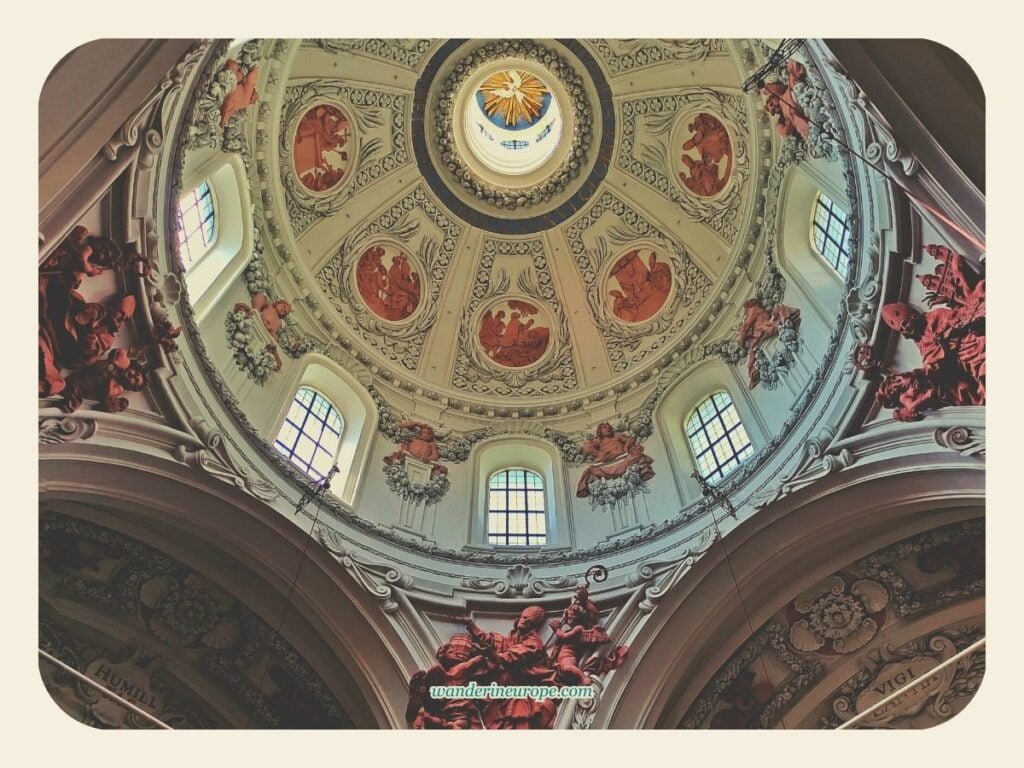

Saint Erhard Church, also known as Erhardkirche, is a magnificent Baroque church located in the Nonntal district of Salzburg. With its eye-catching architectural design and elaborate decoration, it’s one of the most noteworthy sacred buildings in Salzburg.
Despite its central location, just south of the Fortress hill under the Nonnberg Nunnery, this architectural gem is often overlooked by visitors. And that’s a real shame because the Erhard Church is a masterpiece of Salzburg architecture.
Originating from a period dominated by the Italian Baroque style, it embodies all the extravagance, joy of life, and wealth of color and ornamentation characteristic of that era.
Interesting features of this church:
Some of the church’s special features include the dome crowning the two square towers of the façade, the double flight of steps, and a wall fountain with a lion’s head gargoyle. The water from the fountain is said to come from a mineral spring with purifying and life-giving properties.
Inside St. Erhard’s Church, you’ll also find remarkable religious and centuries-old artworks. The rich colors and elaborate decoration by the brothers Francesco and Carl-Antonio Brenno are truly impressive.
Surely, you’ll notice the spacious high altar, embellished with stucco marble. It’s a work of sculptor Andreas Götzinger. The painting on the high altar depicts “The Baptism of St. Ottilia by St. Erhard,” painted in 1692 by Johann Michael Rottmayr.
For more information, please see its official website linked in the resources section of this post.

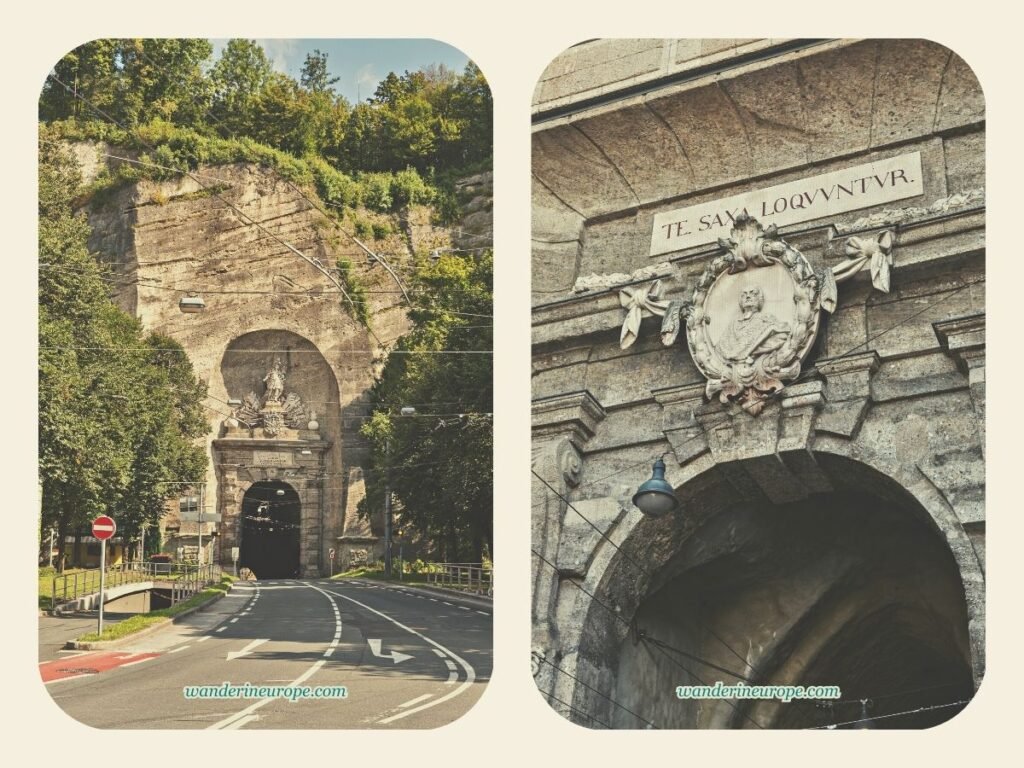

Siegmundstor is a unique landmark to see in Salzburg, located just a few steps south of St. Blaise’s Church.
It’s an impressive city gate that passes through Mönchsberg, connecting the Old Town with the districts of Riedenburg, Maxglan, and Leopoldskron.
Built in the mid-18th century, it was the first tunnel in Austria and an ambitious project by Prince Archbishop Siegmund Schrattenbach. The Hagenauer brothers decorated it with sculptures and inscriptions, making it an emblematic work of art.
If you look closely at the arches on the Old Town side, you’ll see an emblem with a portrait of Prince Archbishop Schrattenbach and a Latin inscription above it that reads: “Te saxa loquuntur,” which means “The stones are talking of you.”
The other side of the tunnel features a display of St. Sigismund in antique armor, crested with war trophies and the coat of arms of Prince Archbishop Siegmund Schrattenbach.

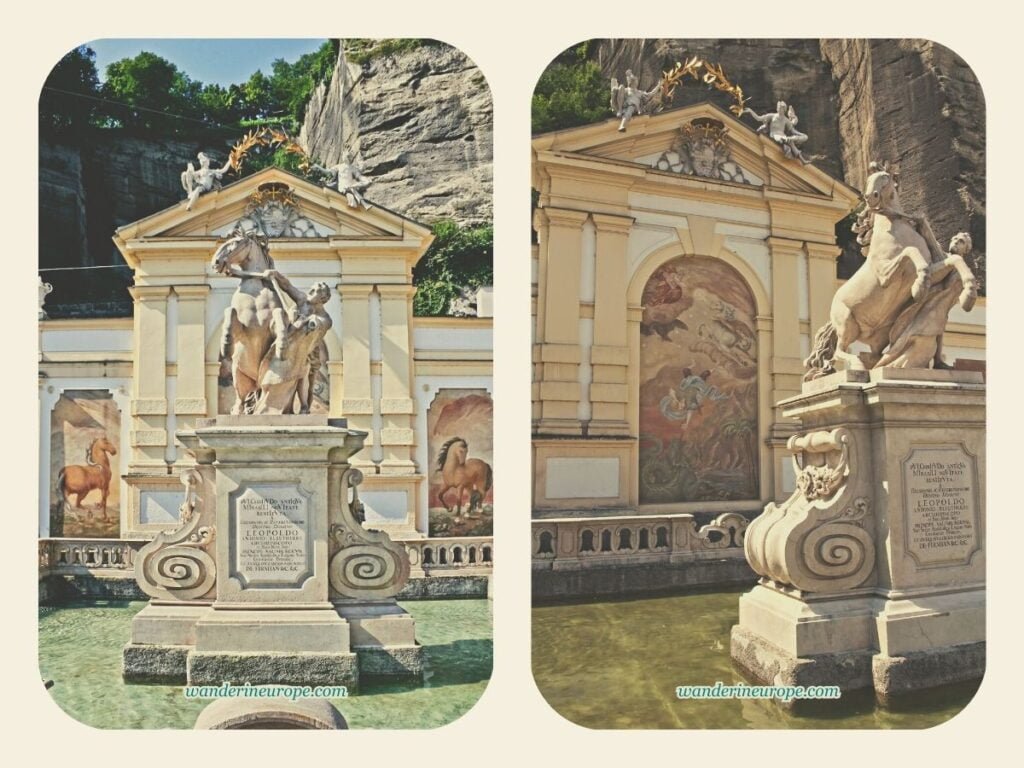

Next to Siegmundstor lies Herbert von Karajan Square, where you can pause to appreciate the history of Salzburg from the Pferdeschwemme, or Horse Pond.
Dating back to the 17th century, this landmark was once where parade horses from the prince-archbishops’ stables were washed and groomed.
It’s a notable landmark, especially since it was built by Fischer von Erlach, the same architect responsible for the Trinity Church, Kollegienkirche, and Markuskirche.
Fun fact: At the center of the well stands a statue named “Der Rossebändiger,” which translates to “The Horse Tamer.” Fans of The Sound of Music will also enjoy seeing Pferdeschwemme, as it’s another filming location in Salzburg.

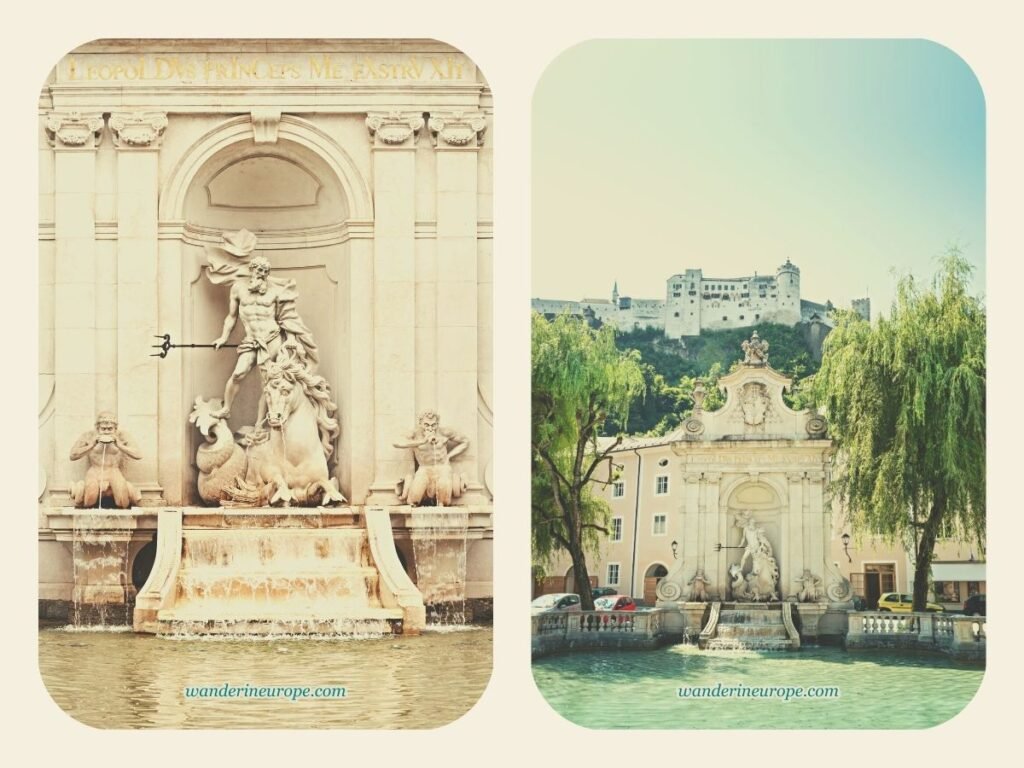

If you’re walking to the fortress, the funicular, or St. Peter’s Cemetery, you’ll surely cross Kapitelplatz, or Chapter Square.
This spacious square is home to Kapitelschwemme, or the Chapter Fountain, a landmark in Salzburg that’s reminiscent of Rome’s Trevi Fountain.
Modeled after Roman fountains, it features a sculpture of Neptune, the god of the sea, holding a trident and crown while mounted on a seahorse that spouts water. Located at the southern part of the square, it’s the perfect spot for a beautiful photo with Hohensalzburg Fortress in the background.

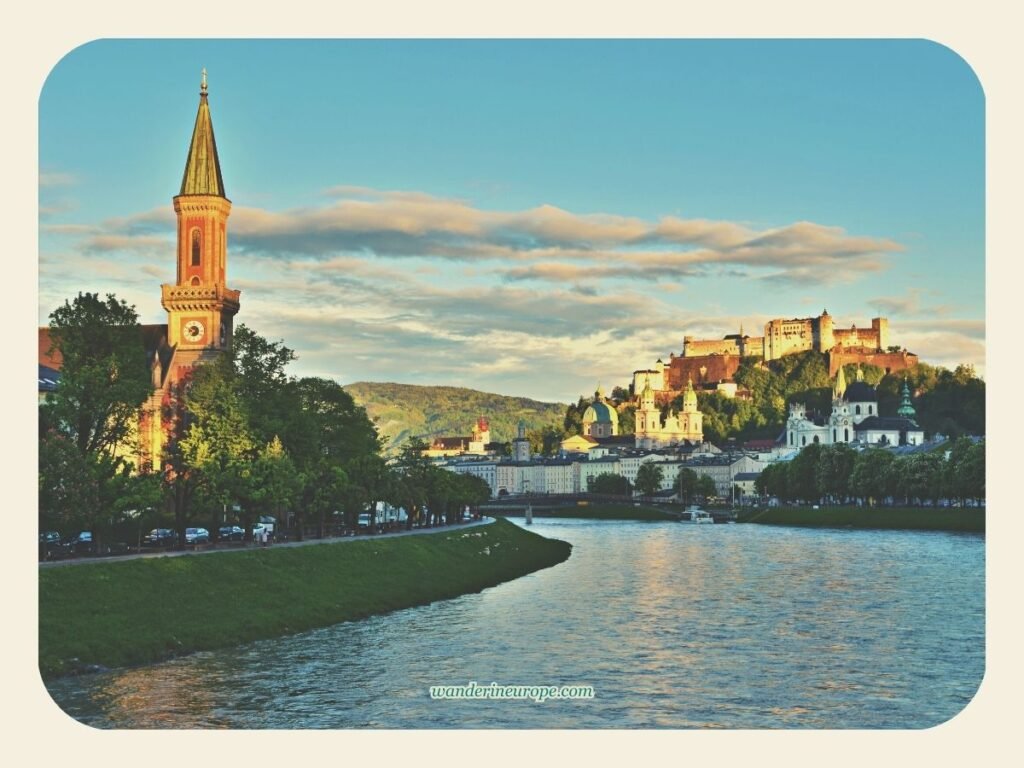

When it comes to perfect spots for taking photos in Salzburg, Müllnersteg is one of the best.
From this bridge, you can see a picture-perfect view of Old Town Salzburg that’s reminiscent of Mont Saint Michel in France.
The view includes the Christ Church Evangelical Parish of Salzburg, a landmark that adds extra charm to the scene. From the bridge, you can easily spot it thanks to its lone spire towering over the trees along the Salzach River.
While it may seem like just a small detail in the grand view of Old Town Salzburg, it’s a gorgeous landmark on its own. Its pointed spire provides a beautiful contrast to the Baroque domes of the buildings in Old Town Salzburg.

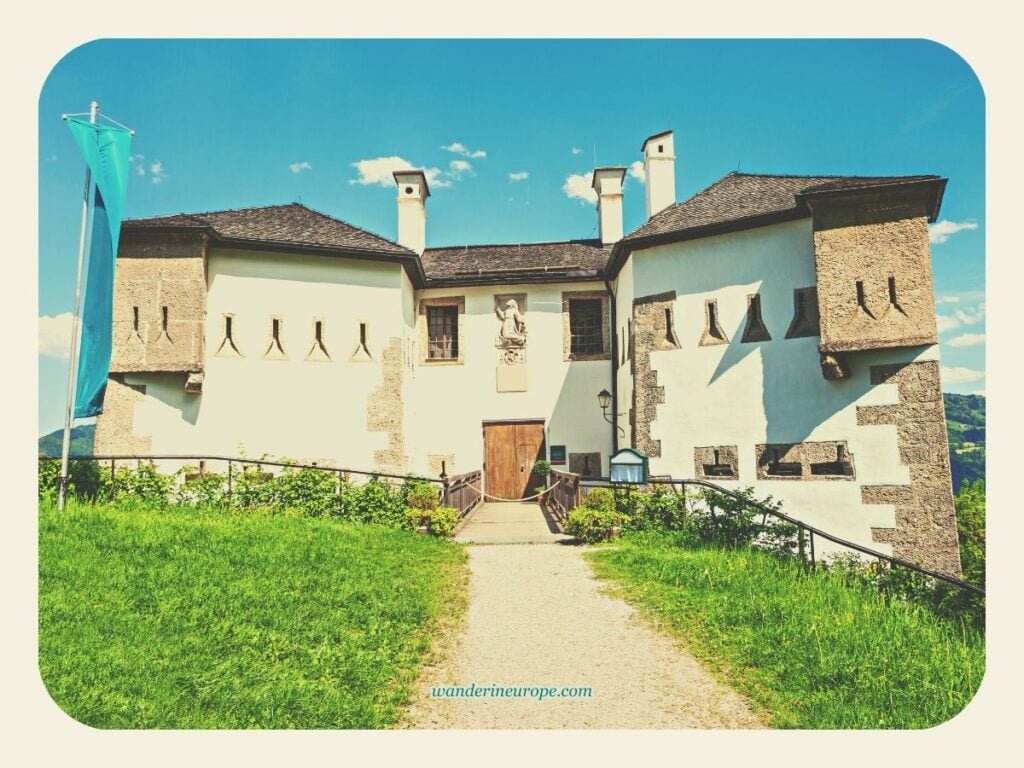

Did you know that Salzburg has not one, but two hilltop fortresses in its historic center?
In addition to Hohensalzburg Fortress, there’s also Franziskischlössl. This little fortress sits atop Kapuzinerberg, the mountain opposite Mönchsberg and Festungsberg across the River Salzach.
Built by Archbishop Paris of Lodron in 1629 during the Thirty Years’ War, Franziskischlössl was part of Salzburg’s fortifications, which included a preserved 3 km long fortress wall in the south and east.
To me, Franziskischlössl is worth visiting for its fine example of medieval defensive architecture and the breathtaking views from the fortress grounds.
In case you missed it, here is my Kapuzinerberg Guide to help you locate Franziskischlössl.



Last but not least, Schloss Leopoldskron is a stunning rococo palace and a noteworthy landmark for anyone visiting Salzburg, Austria.
Built in 1736 by Prince-Archbishop Count Leopold Anton Eleutherius von Firmian, this national historic monument is a true gem of Baroque architecture.
When you visit, you’ll be amazed by the Great Hall, the Marble Hall, the Library, and the Venetian Room — all magnificent spaces that have been lovingly restored by local artisans.
The palace is set amidst a beautiful seven-hectare park and overlooks the serene waters of the Leopoldskroner Weiher lake, providing a breathtaking setting for photos.
Good to know — Schloss Leopoldskron is not only famous for its beauty, but also for its role in popular culture: it’s known as the “Sound of Music” palace after being featured in the movie. Since 2014, it has been a privately owned hotel.
The only catch? You have to stay a night to explore the palace and its surroundings.
Check this one: Enjoy Salzburg Experiences Without Spending Over $100 (opens in a new tab)
Guides and Tours
If you need help in exploring Salzburg’s beautiful sights and landmarks, here are some to check:
- Original Sound of Music Tour — best for the fans of the movie.
- Salzburg 2.5-hour Walking Tour — great for people wanting to see the highlights of Old Town and learn about Mozart.
- Old Town Salzburg Private Walking Tour — customizable exclusive tour; 2 to 6 hours depending on how many places you want to see in Salzburg.
- Salzburg Night Tour — a unique experience to discover the dark side of Salzburg
- 2-Hour Guided Tour With a Photographer — great tour for travelers who want epic photo souvenirs as they explore the city.
From great hotel deals to skip-the-line tickets and affordable eSim to cheap rentals, click here for the best hotel deals and more travel discounts.
Salzburg Travel Plans
For ideas and inspiration on visiting these attractions and architectural sites, start planning by checking out one of the travel plans below.
For a convenient, unique, or more enriching visit, check out these experiences and services:


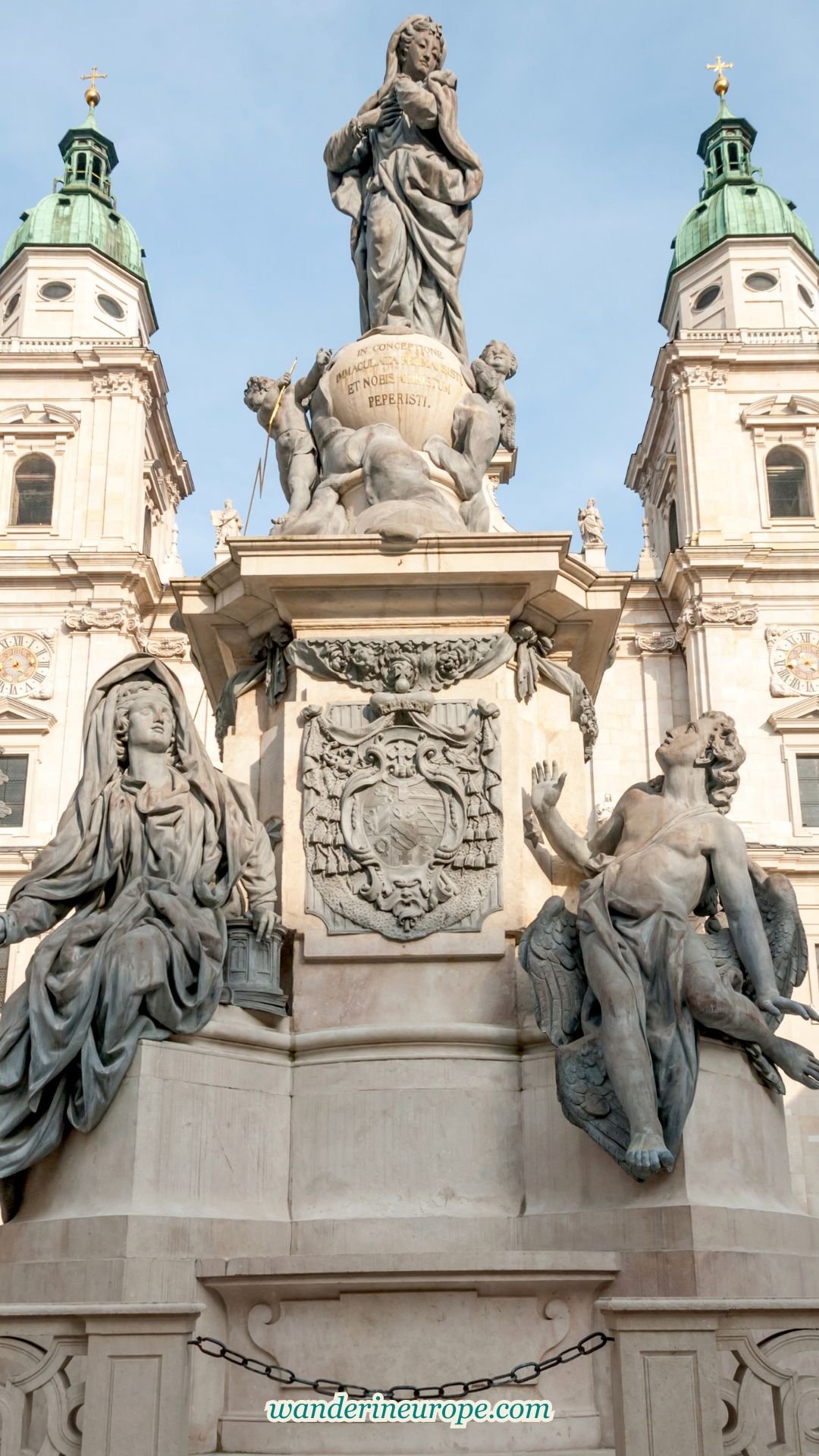
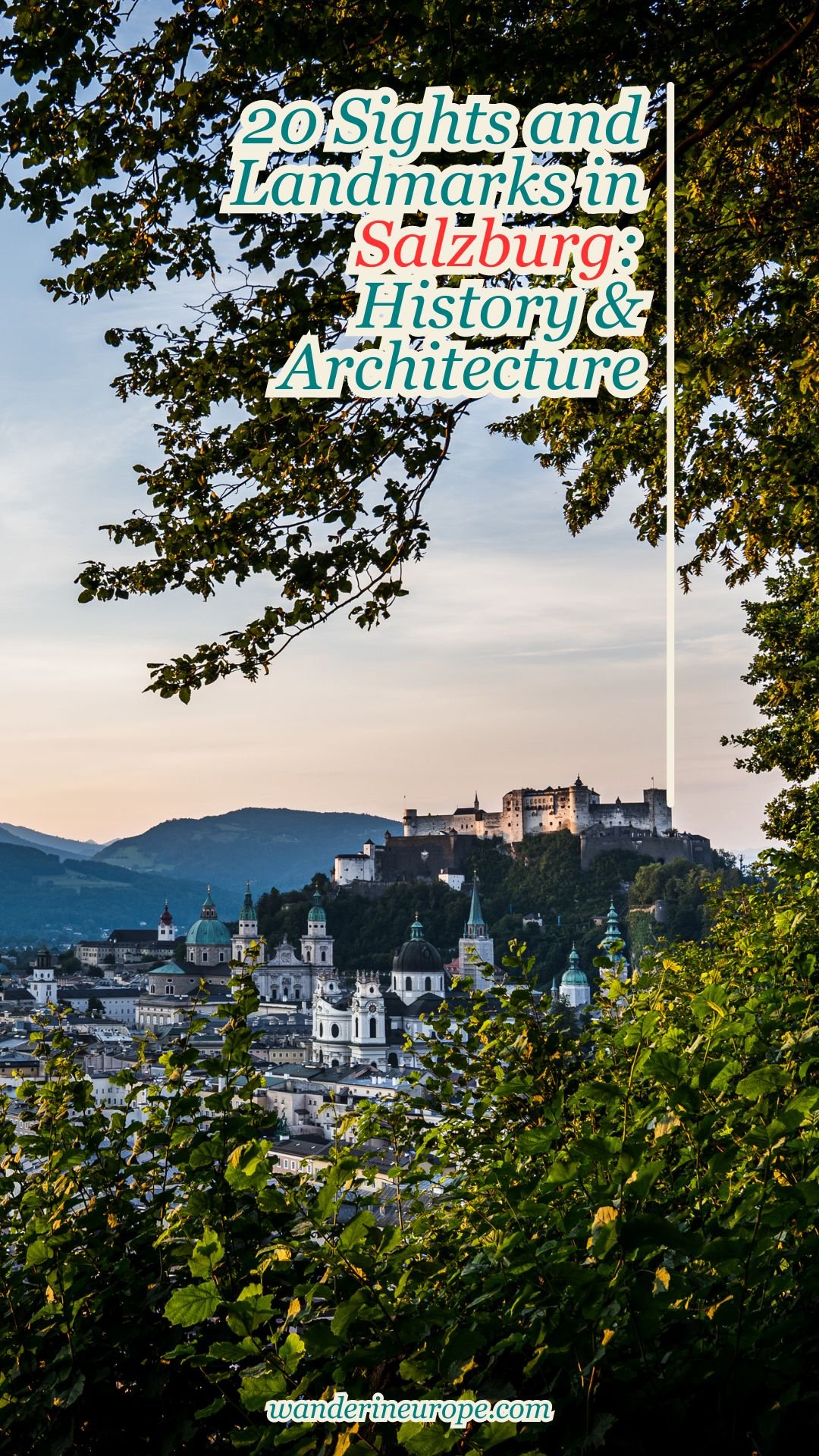
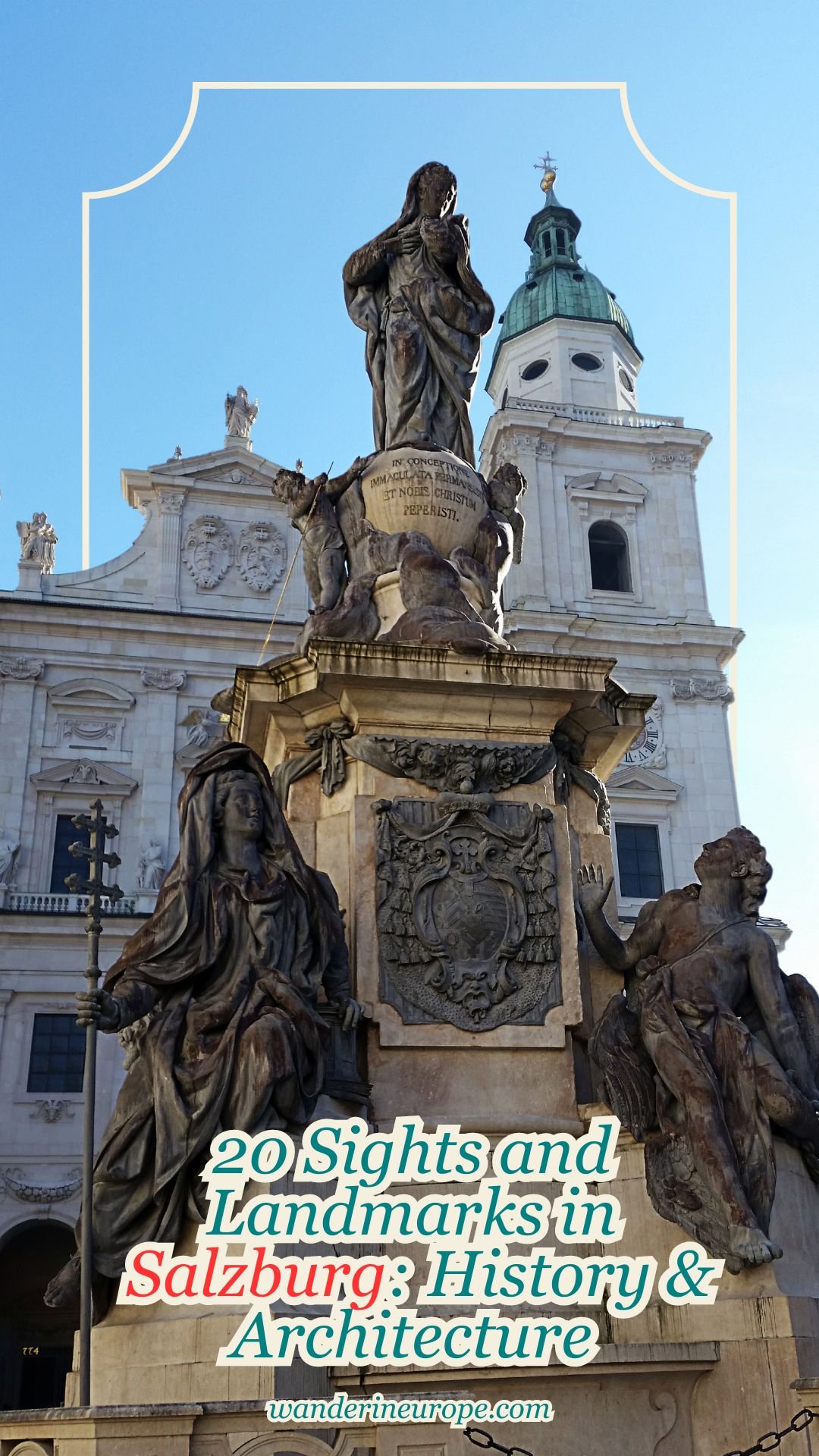
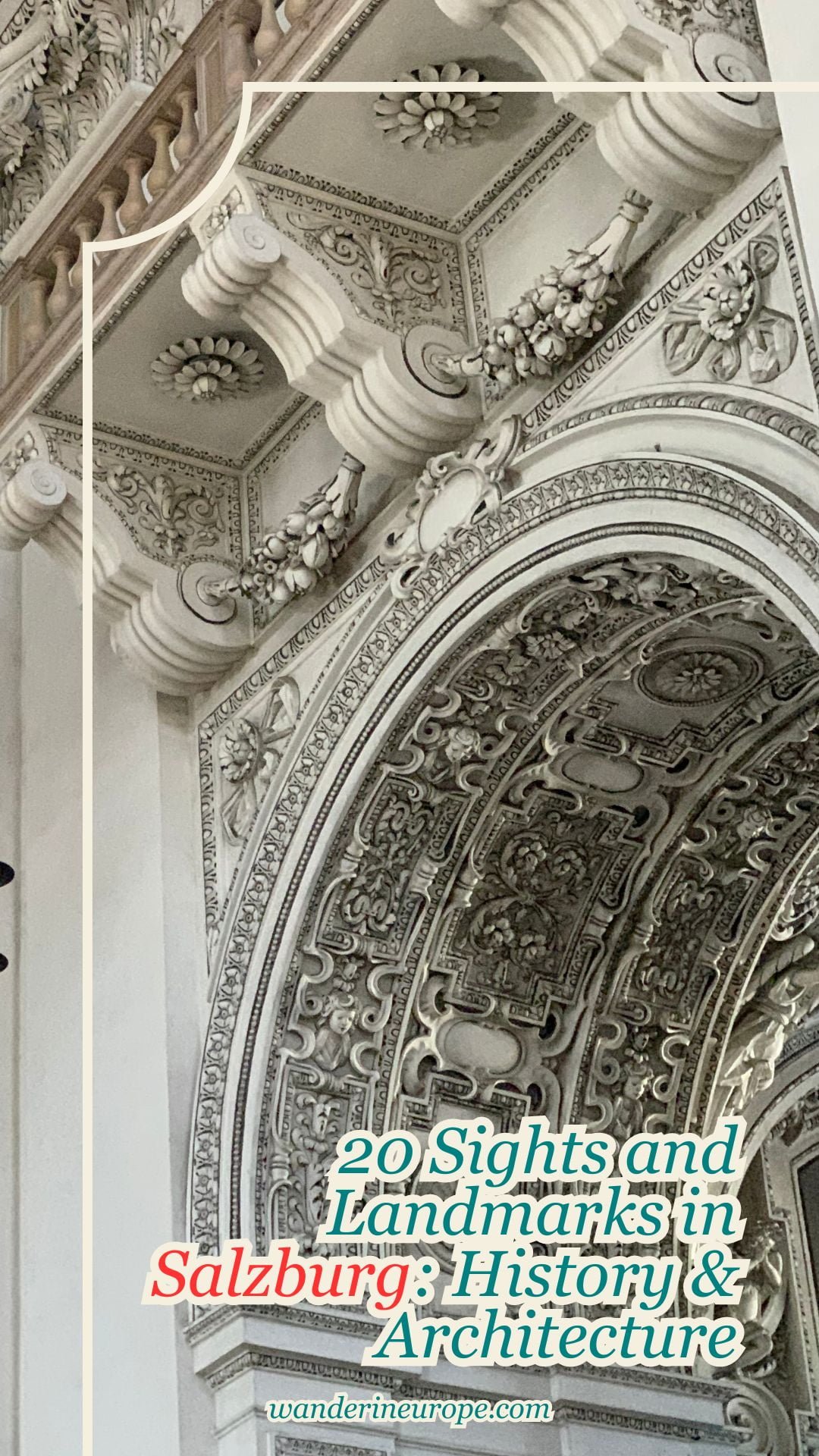
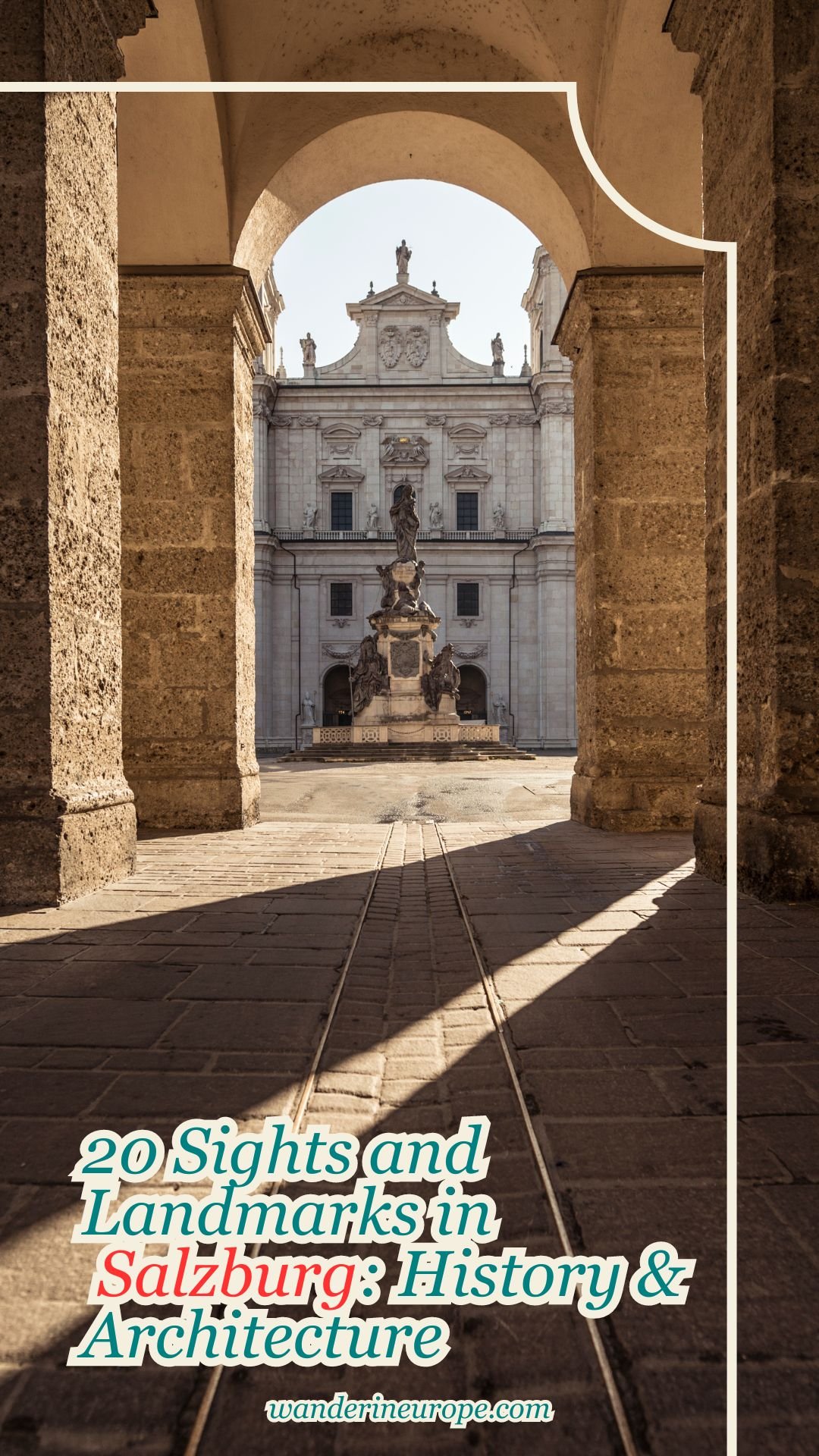
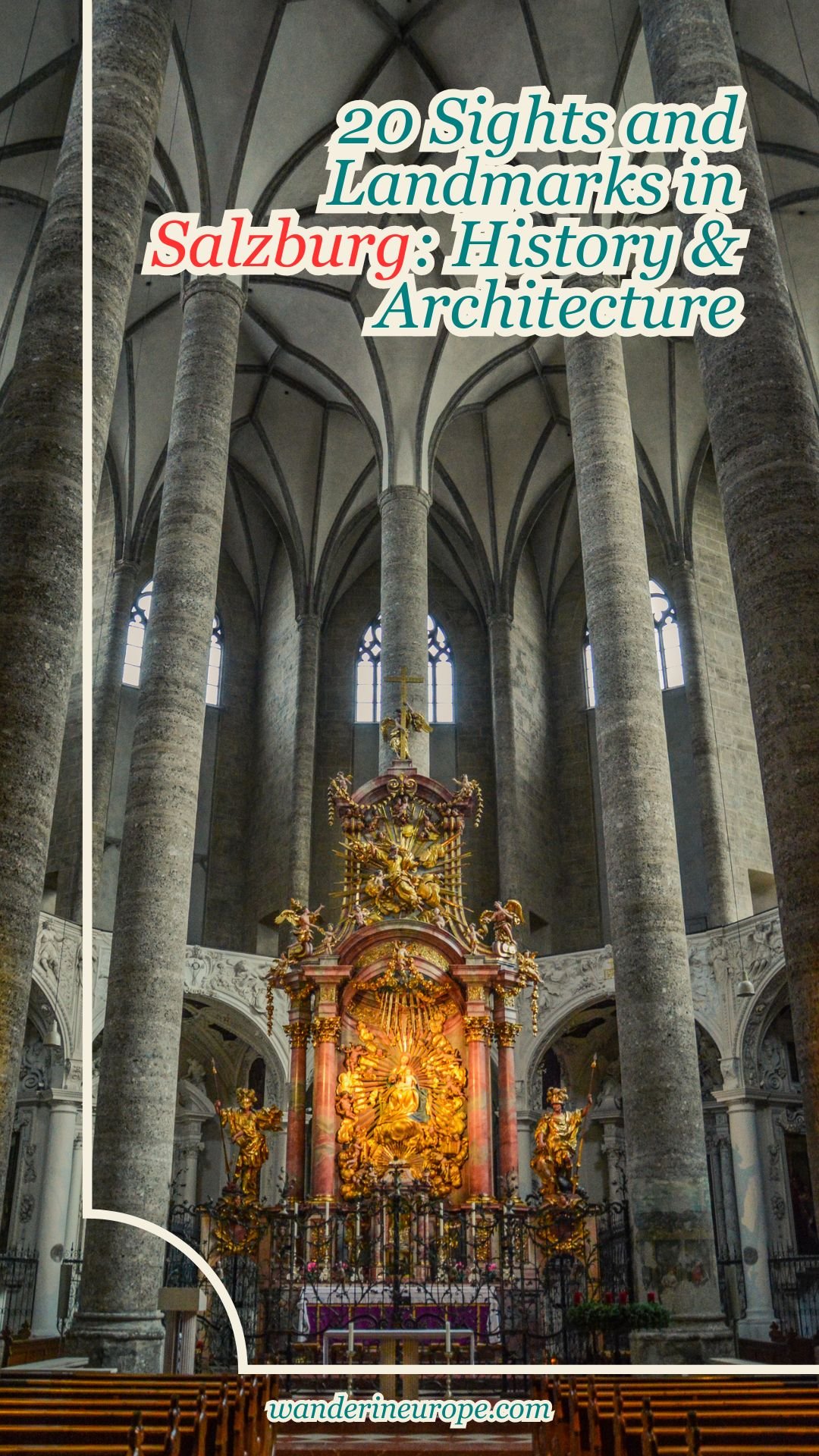
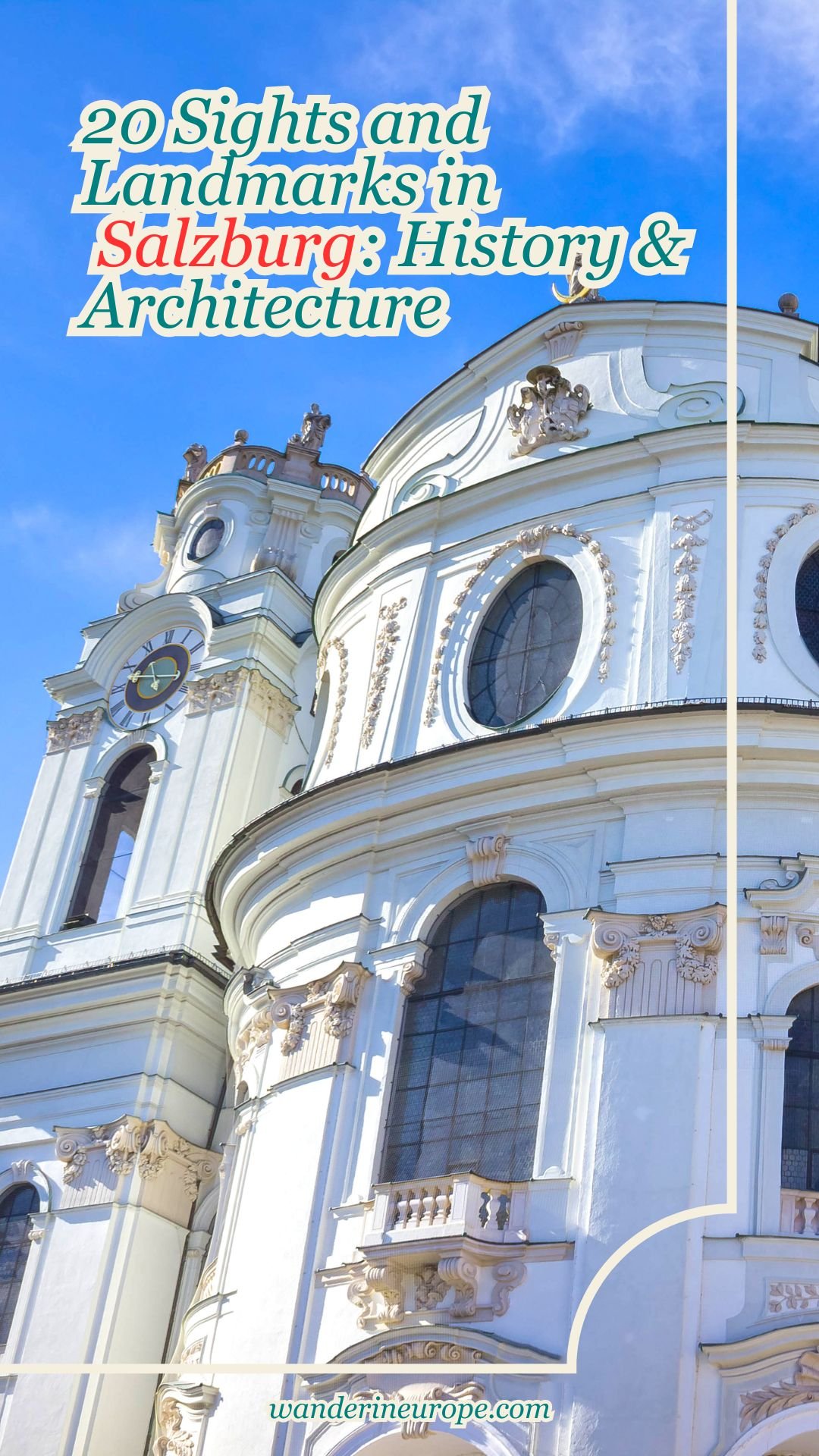
Pin this to save it for later or bookmark it to read anytime.

Resources
So, that’s it for now! Those are some of the sights, landmarks, and destinations you can visit in Salzburg. I hope this post is helpful if you’re planning a trip to Salzburg. As promised, below are the links you can use to learn more about some of the places mentioned in this article.
- Official Website of Mozart’s Residence
- Official Website of Saint Peter’s Abbey
- Saint Blaise’s Church (salzburg.info)
- Saint Mark’s Church (visit-salzburg.net)
- Franciscan Church (salzburg.info)
- Official Website of Salzburg’s Collegiate Church
- Official Website of Cajetan Church
If you want, you can bookmark this post to quickly return to this list of links.
- Hohensalzburg Fortress
- Salzburg Cathedral
- Nonnberg Abbey
- Mirabell Palace
- Salzburg Residenz
- Mozart’s Birthplace
- Mozart Residence
- St. Peter’s Church
- St. Blaise’s Church
- St. Mark’s Church
- Franciscan Church
- Collegiate Church
- Cajetan Church
- St. Erhard’s Church
- Siegmundstor
- Pferdeschwemme
- Kapitelschwemme
- Evangelical Parish Salzburg Christ Church
- Franziskischlössl
- Leopoldskron Palace
